-
The Garden Gate Story: Inspiration from Carmel-by-the-Sea
Every garden has a story to tell. The beginning of that story is your garden gate entrance. Your garden reflects who you are and what is important to you. Let these gorgeous garden gates in Carmel-by-the-Sea provide inspiration for your own unique and special garden.
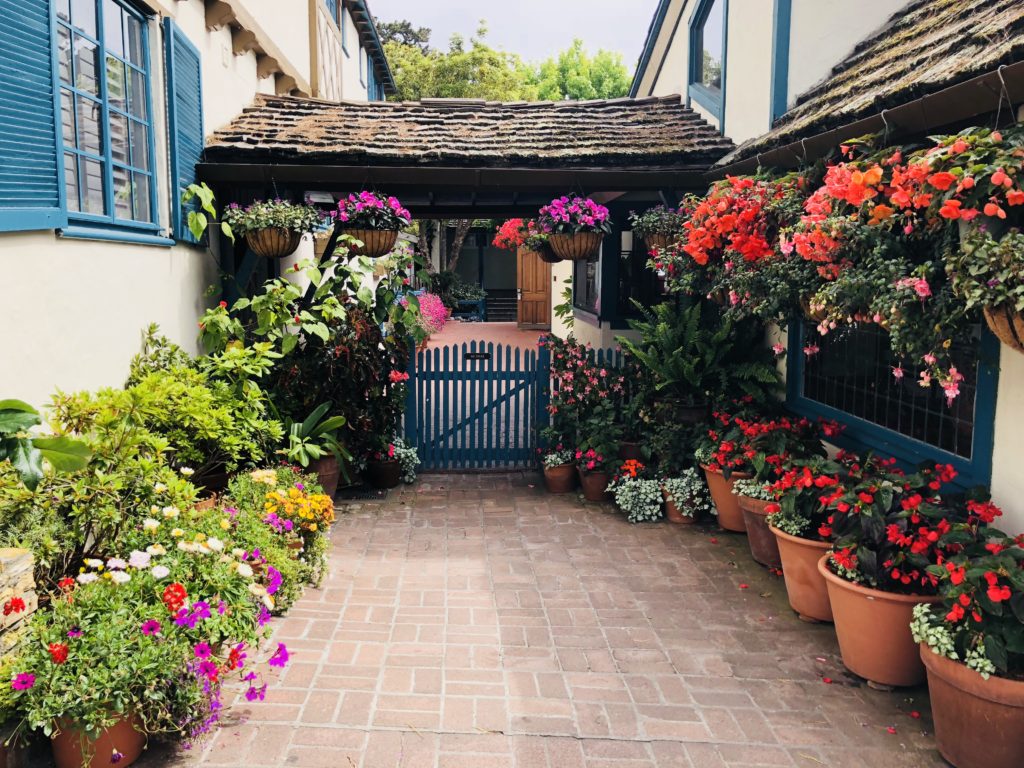 Gardens evolve and grow, and with them, your story grows. What glimpse of your life do you want friends and family to have? Your gate sets the tone for the beginning of the story. Your gate lets everyone know the intention of your story. Is your gate inviting? Does it have bright colors or entice with warmth? Is it more private, implying mystery and intrigue? Whatever it is, your story begins with your gate. It should suggest what we may expect to see once we enter your garden.
Gardens evolve and grow, and with them, your story grows. What glimpse of your life do you want friends and family to have? Your gate sets the tone for the beginning of the story. Your gate lets everyone know the intention of your story. Is your gate inviting? Does it have bright colors or entice with warmth? Is it more private, implying mystery and intrigue? Whatever it is, your story begins with your gate. It should suggest what we may expect to see once we enter your garden.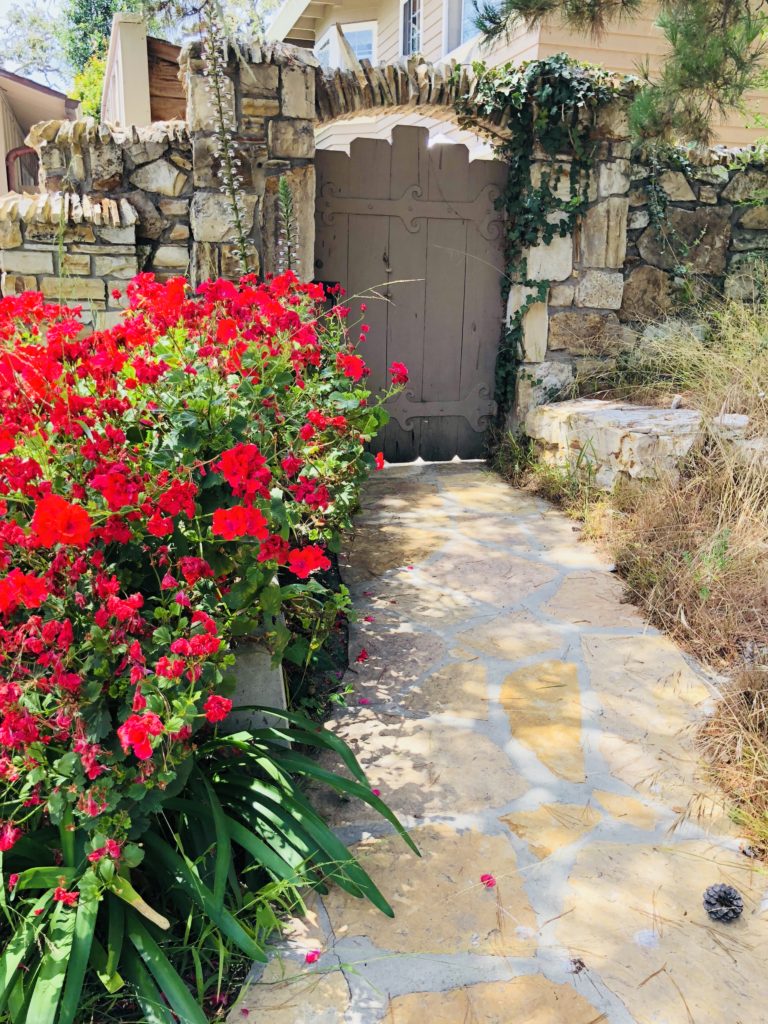
Show me your garden and I shall tell you what you are–Alfred Austin
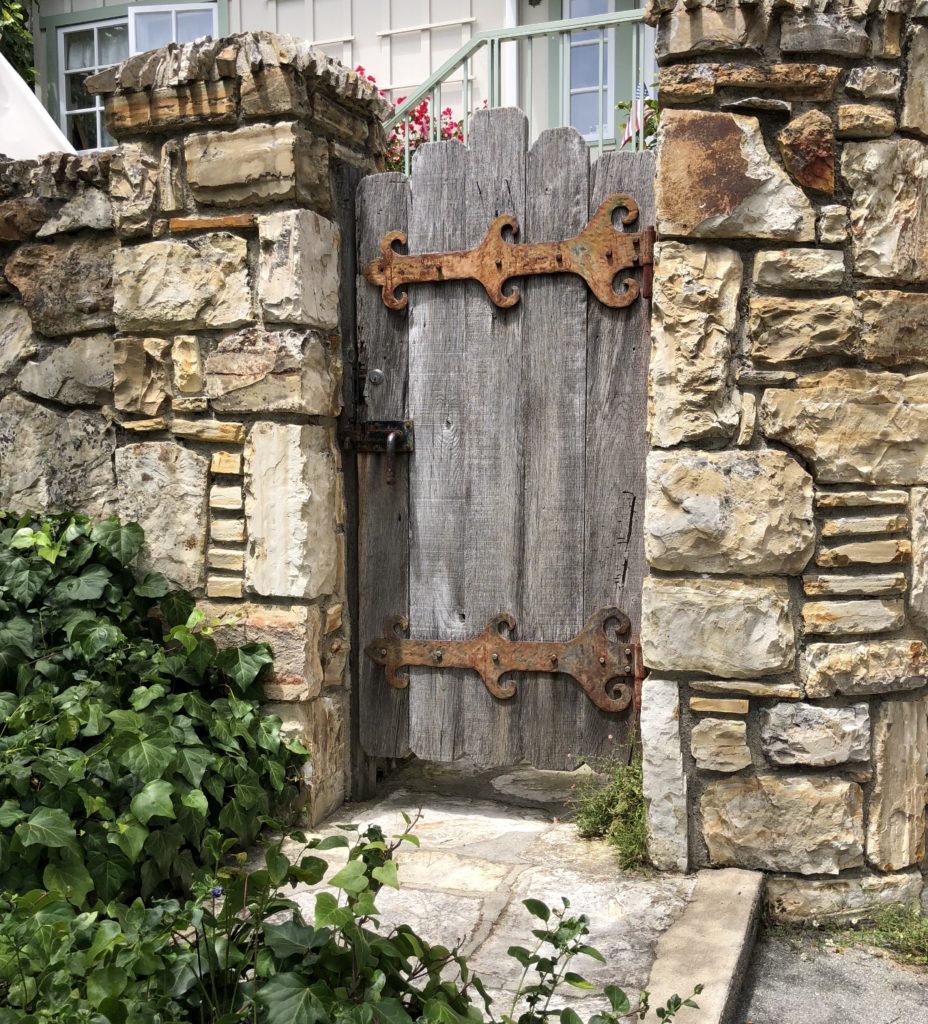
This rustic hinged wooden gate set into stone is typical of the fairy tale style homes peppered throughout Carmel-by-the-Sea.
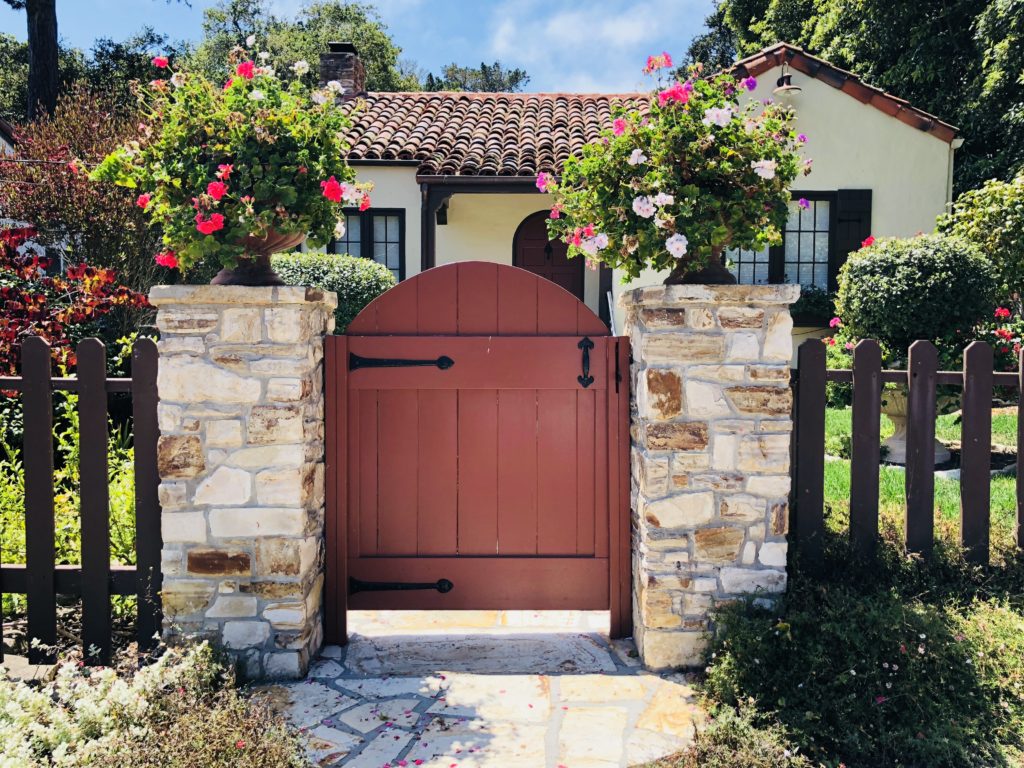
Gardening is the art that uses flowers and plants as paint and the soil and sky as canvas–Elizabeth Murray
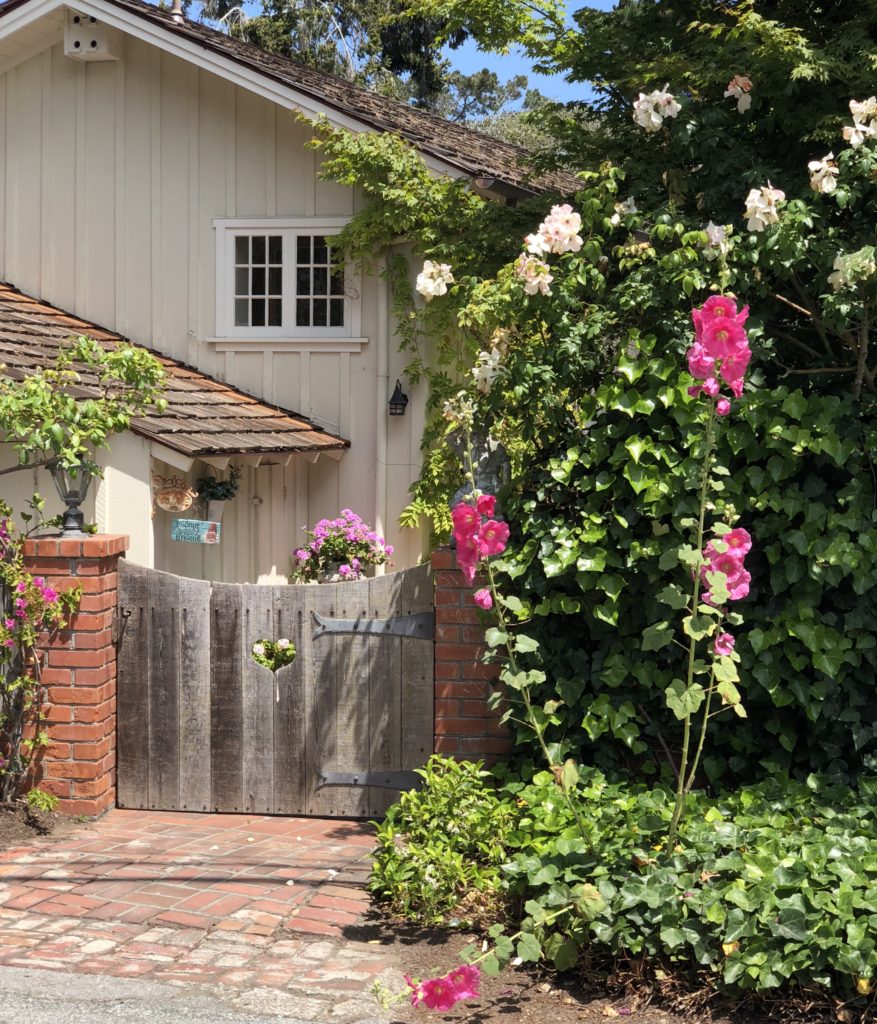
The use of a small heart cut-out in this garden gate, hollyhocks & roses, give this cottage garden depth & charm.
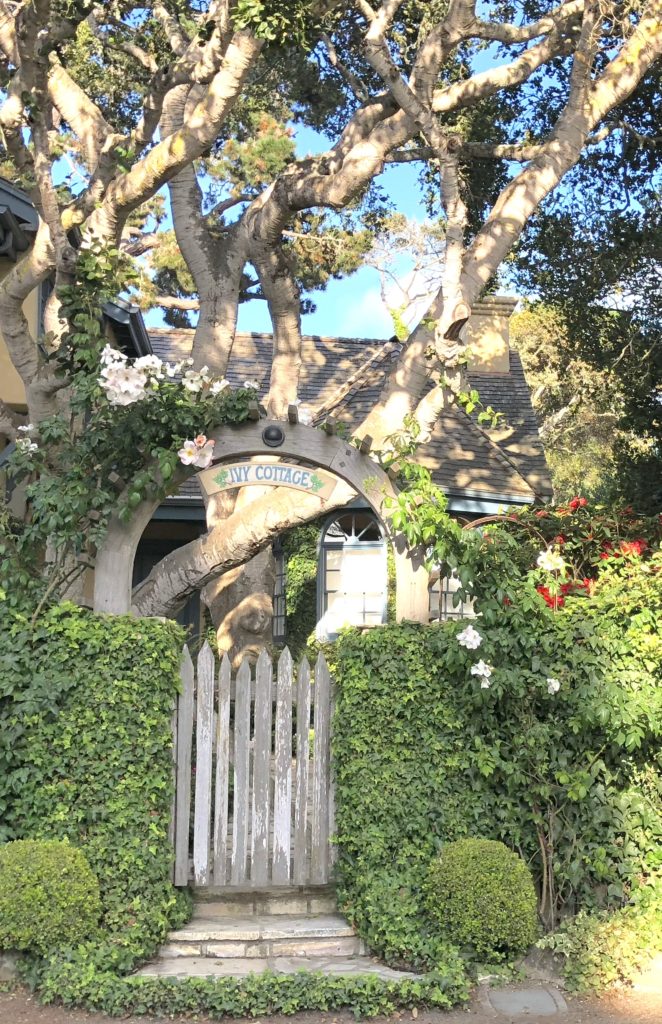
Always throw spilt salt over your left shoulder, keep rosemary by your garden gate, plant lavender for luck, and fall in love whenever you can–Alice Hoffman, “Practical Magic”
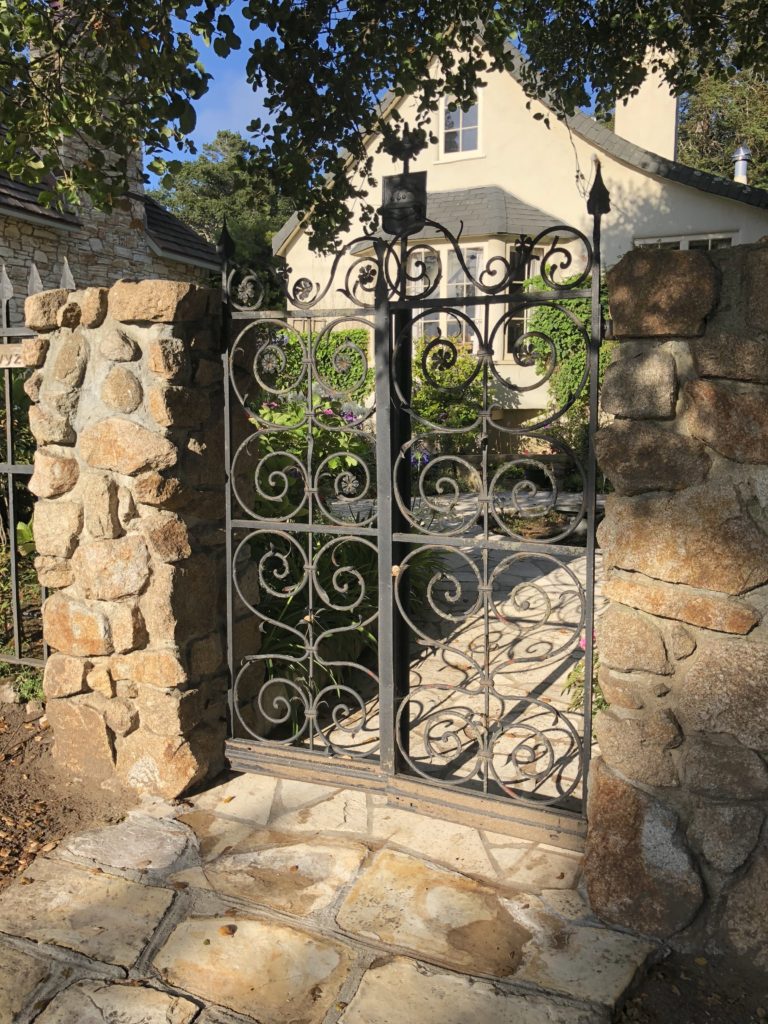
Out of the window, I can see them in the moonlight, two silhouettes saying goodnight by the garden gate–Ray Davies, “Come Dancing”
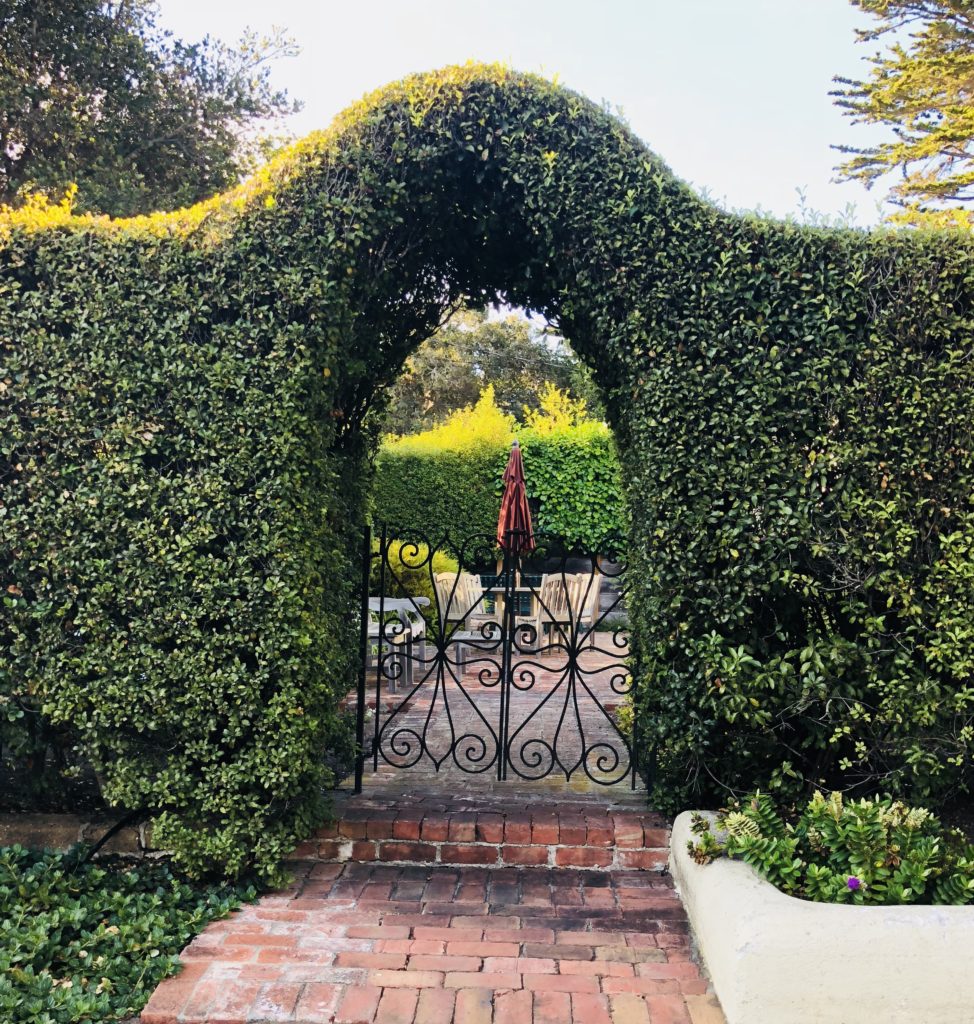
Framed by a sculpted hedge, this arched gateway leads to a secluded garden.
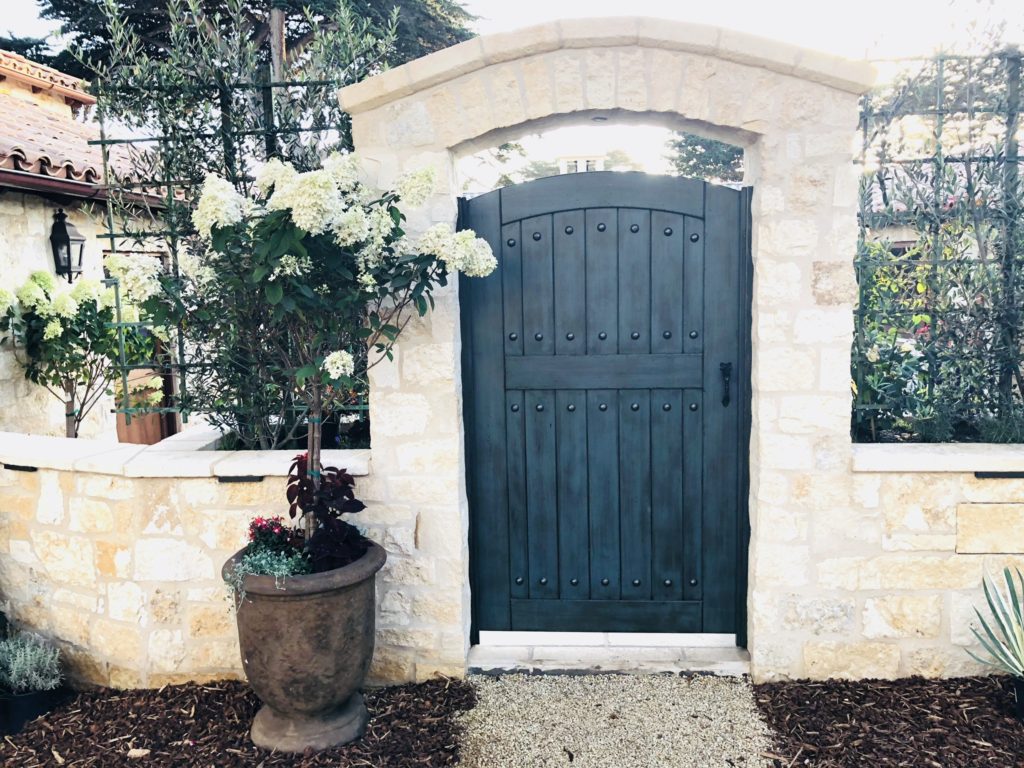
A garden must combine the poetic and the mysterious with a feeling of serenity and joy–Luis Barragan
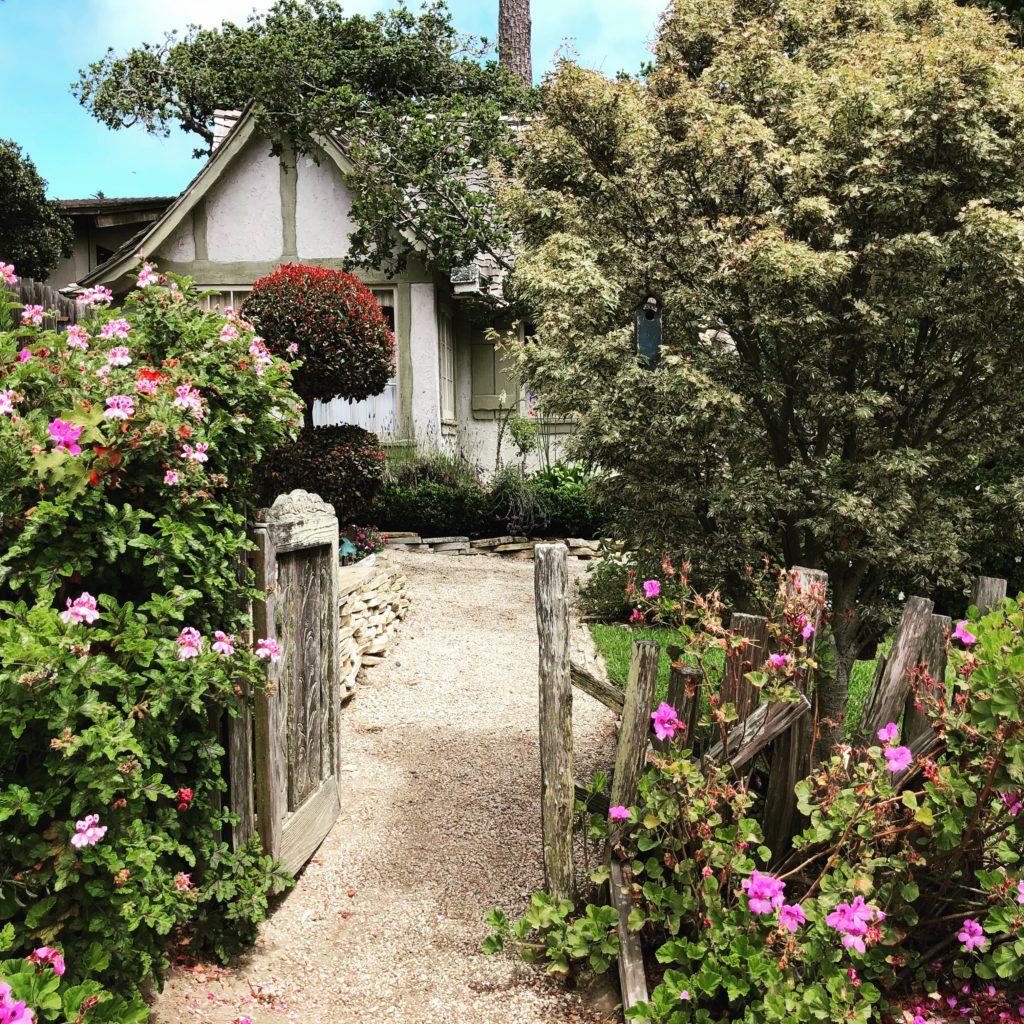
This open garden gate framed by geraniums conveys a sense of warmth and welcome, inviting guests to enter.
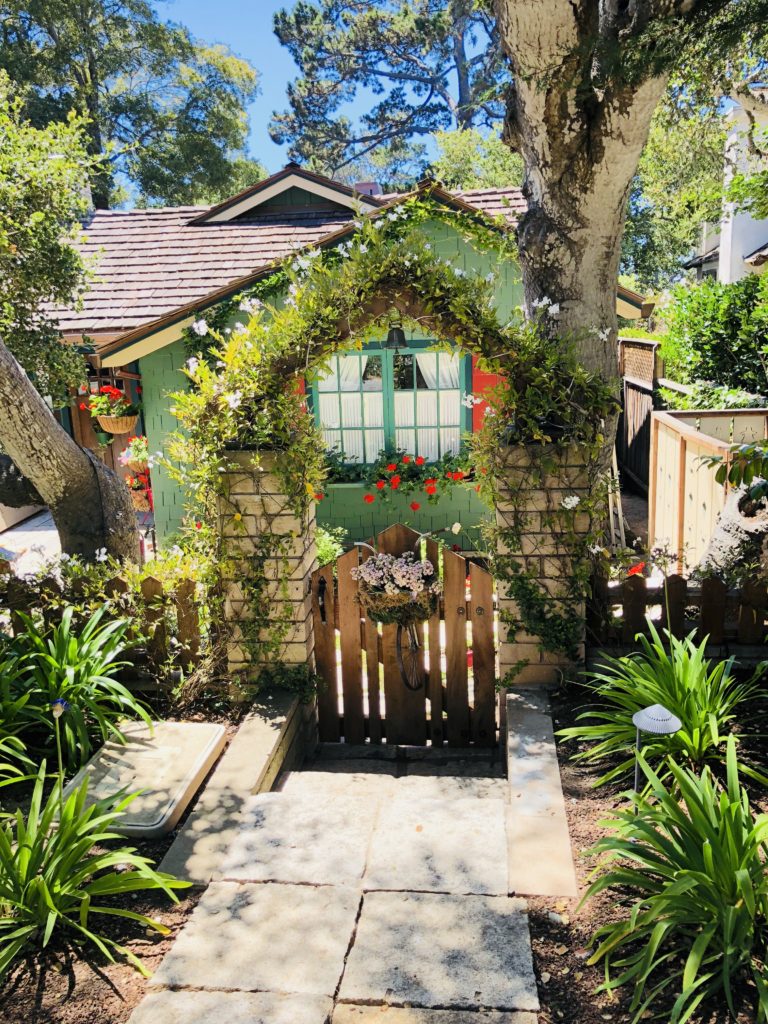
Charming and colorful green and red decor and a hanging bell set this garden gate apart. Note the unique bicycle decor also.
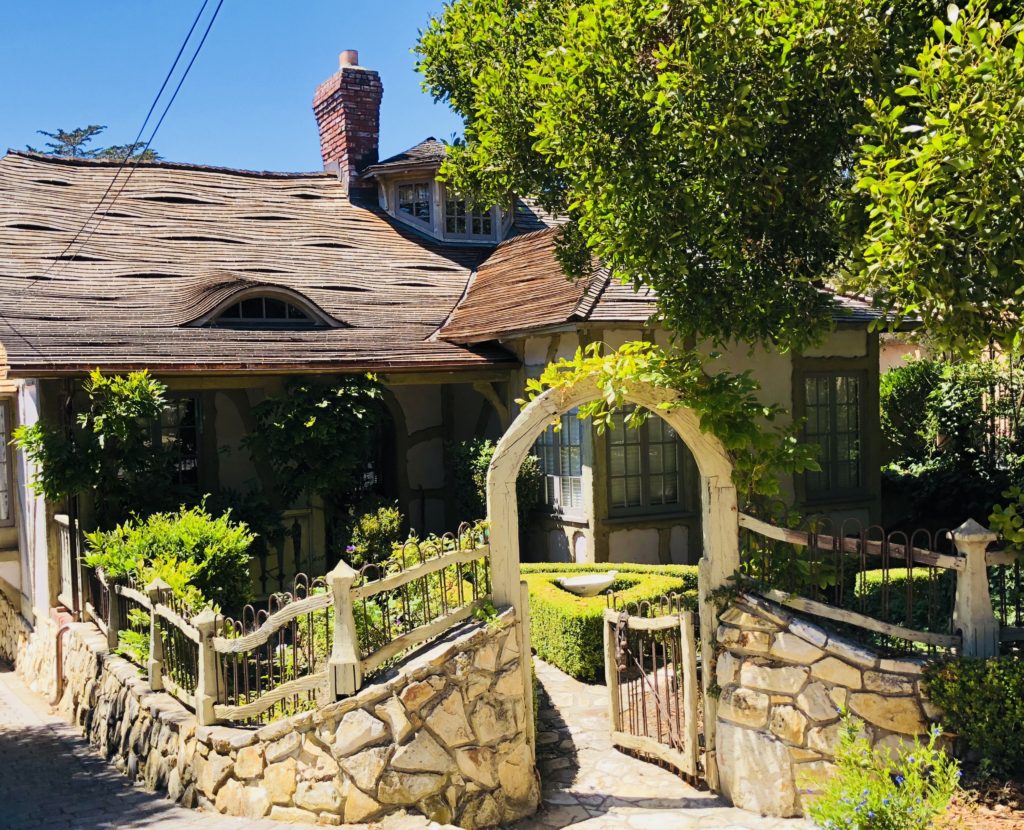
This garden gate is very symbolic of the fairy tale cottage look in Carmel-by-the-Sea.
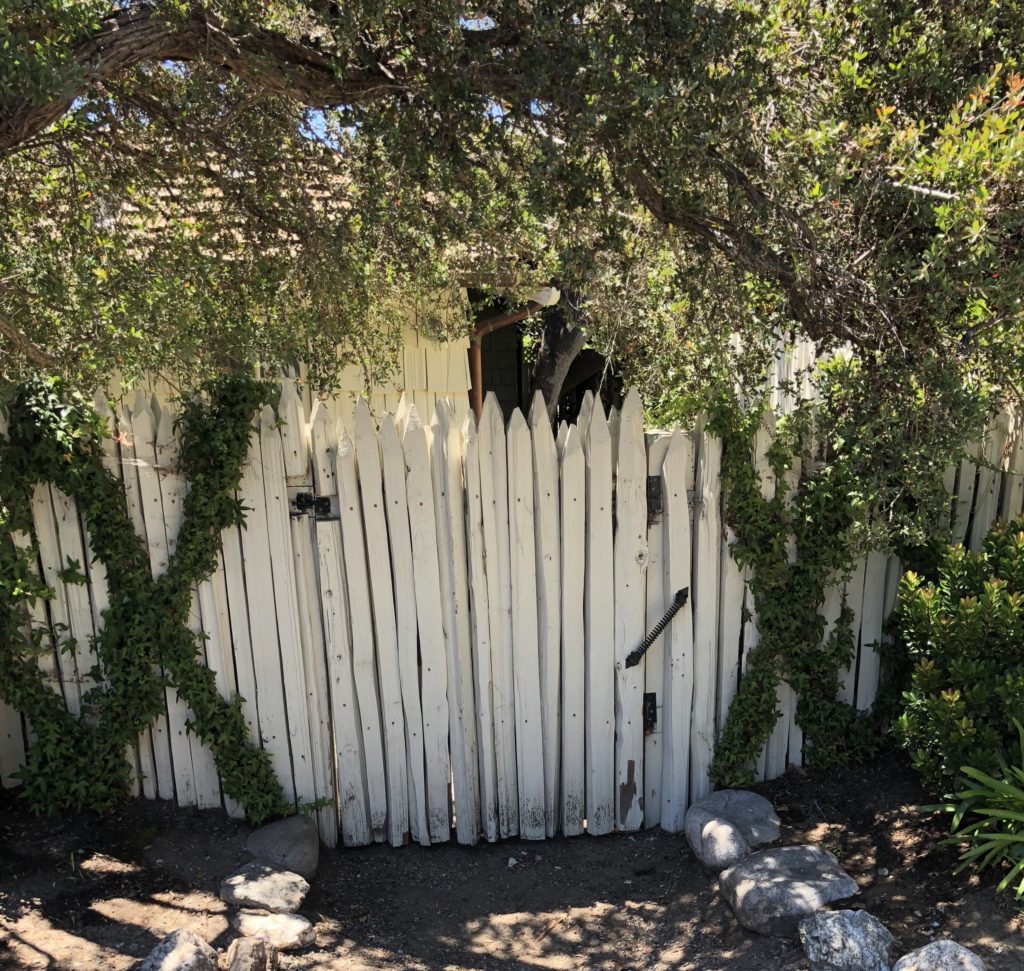
A simple and classic white garden gate is dressed up with ivy trained to form an x design.
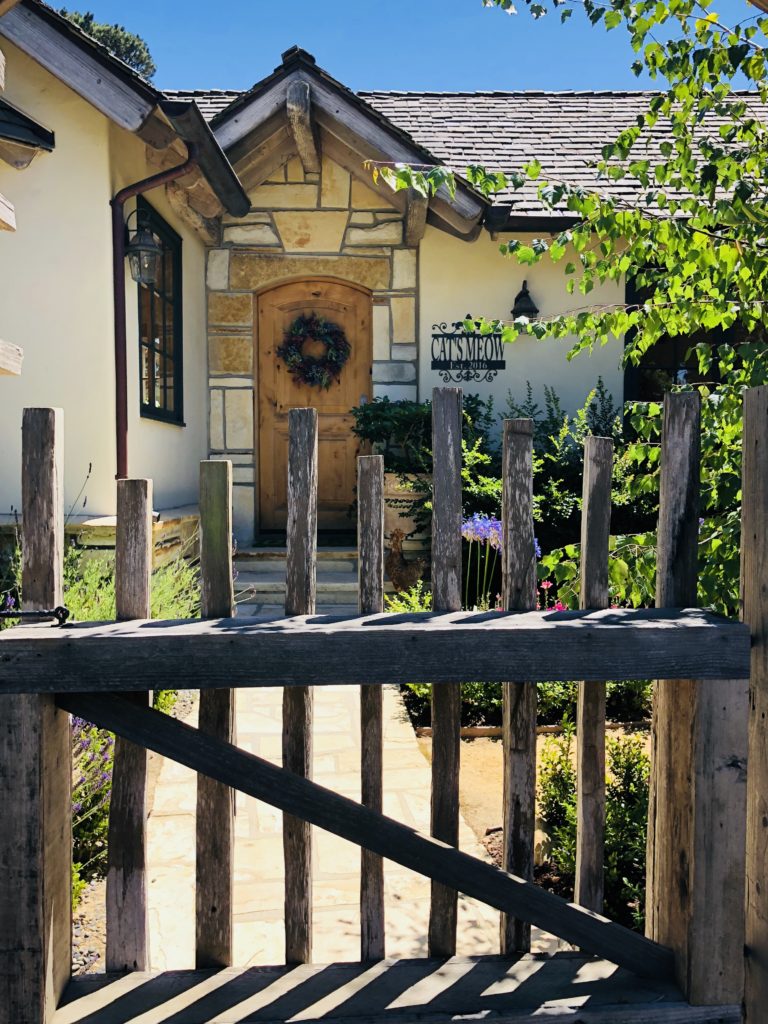
This garden gate is the cat’s meow! Literally.
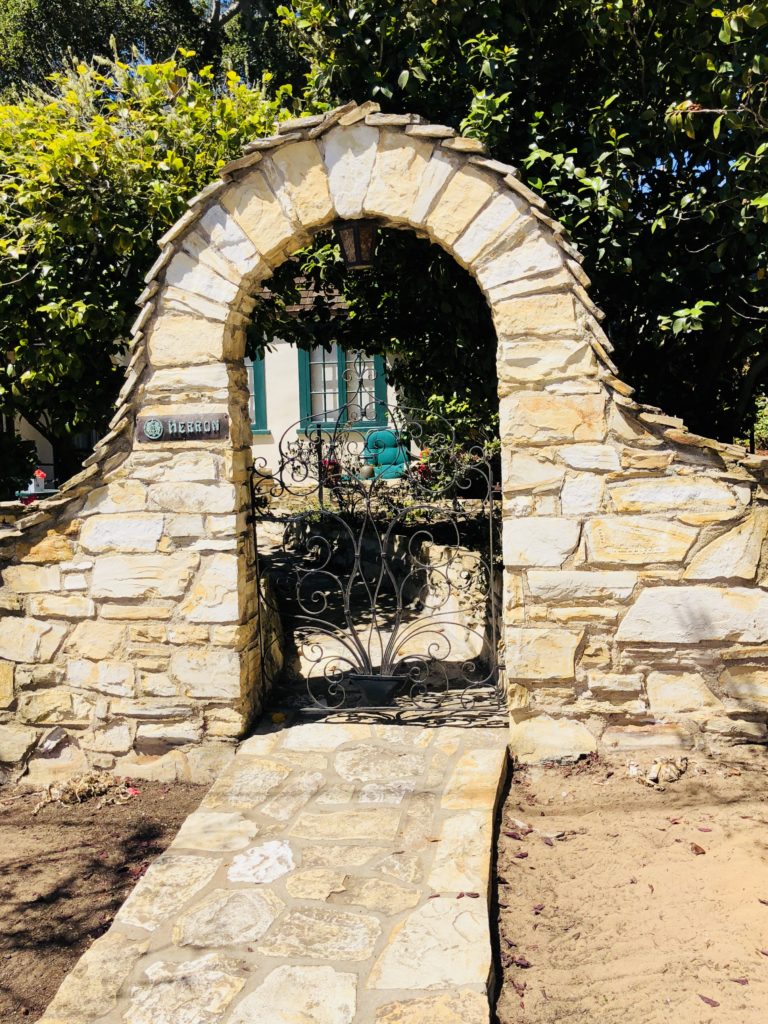
A beautiful and delicate filigree gate balances the ponderous stone arch. A topping of stacked stone “shingles” adds quaint character.

The boxwood hedges flanking the stone path and the rose covered arch provide elegance and romance to this garden gate.
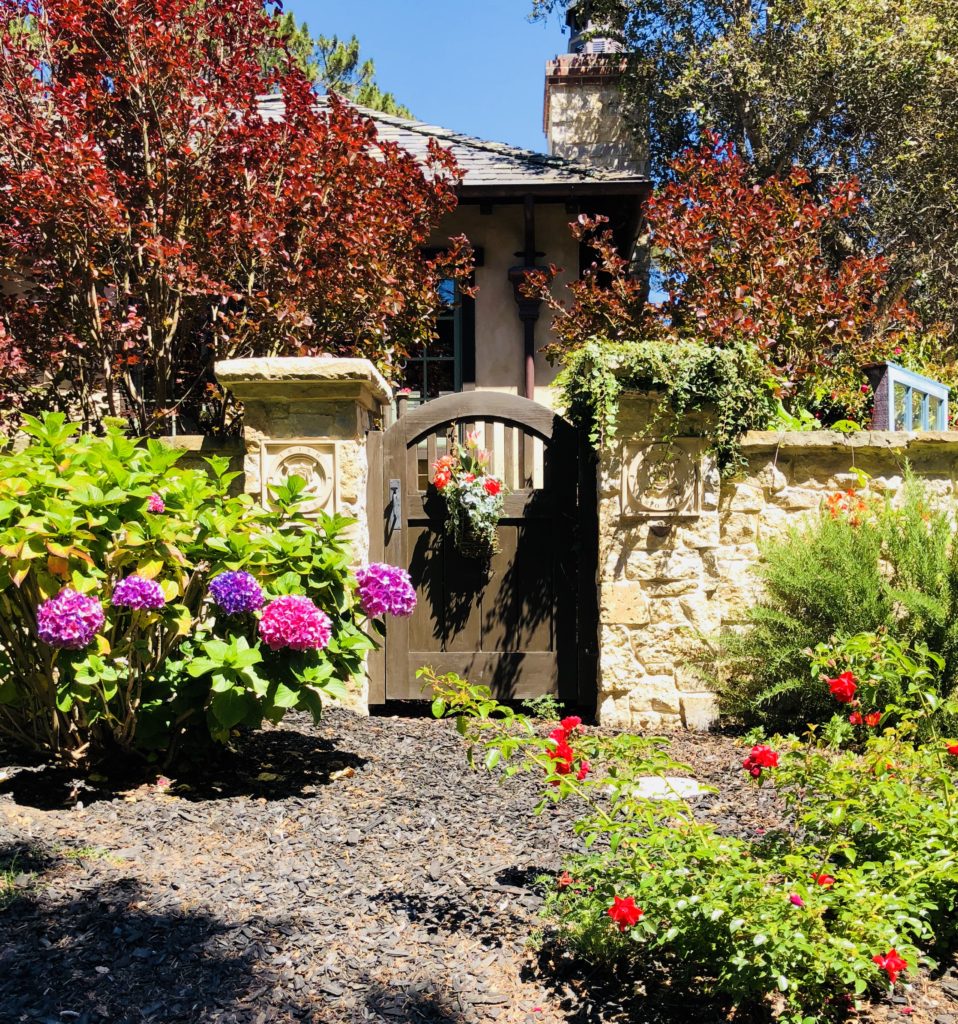
Let us be grateful to the people who make us happy; they are the charming gardeners who make our souls blossom–Marcel Proust
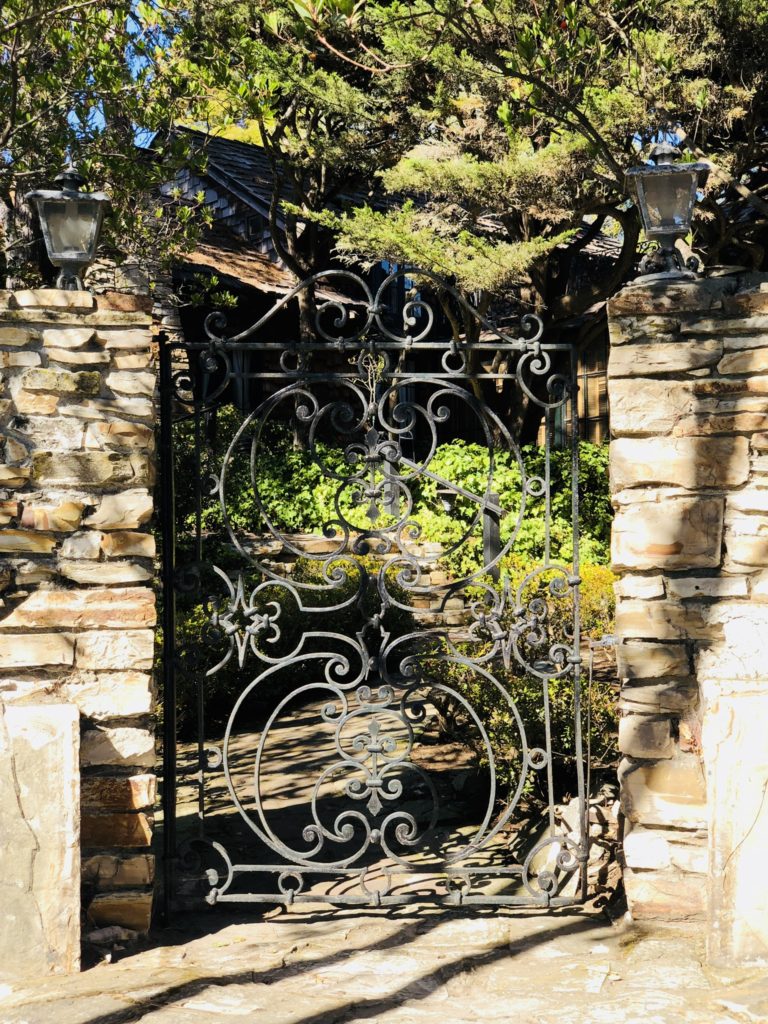
Everything that slows us down and forces patience, everything that sets us back into the slow circles of nature, is a help. Gardening is an instrument of grace–May Sarton
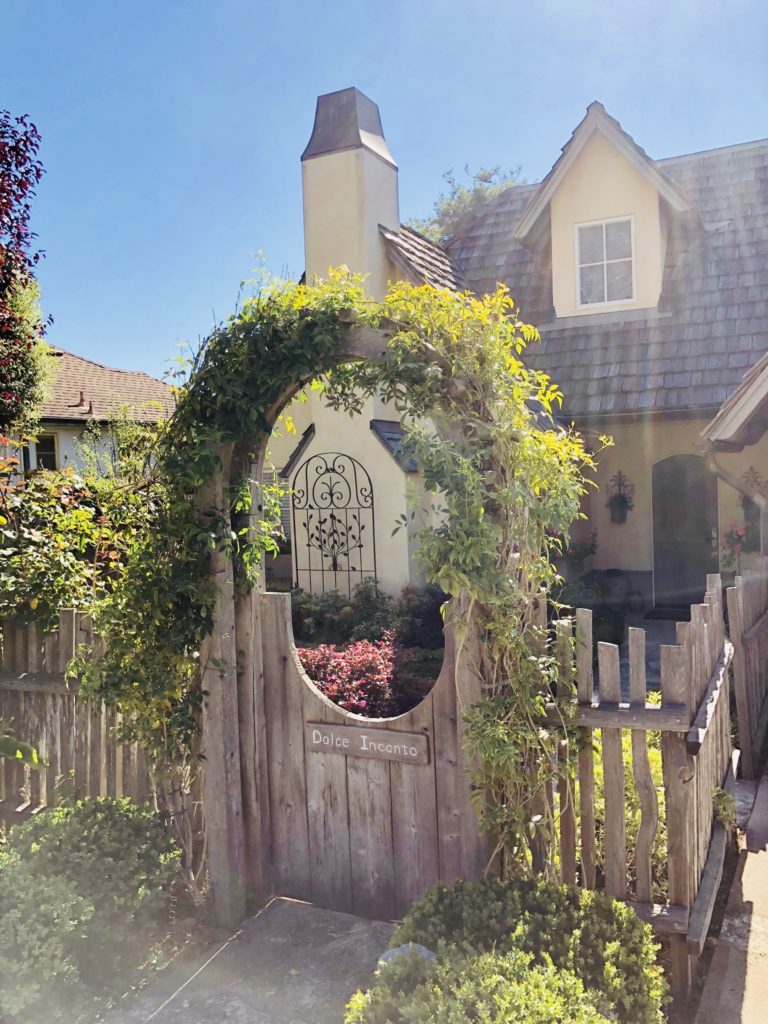
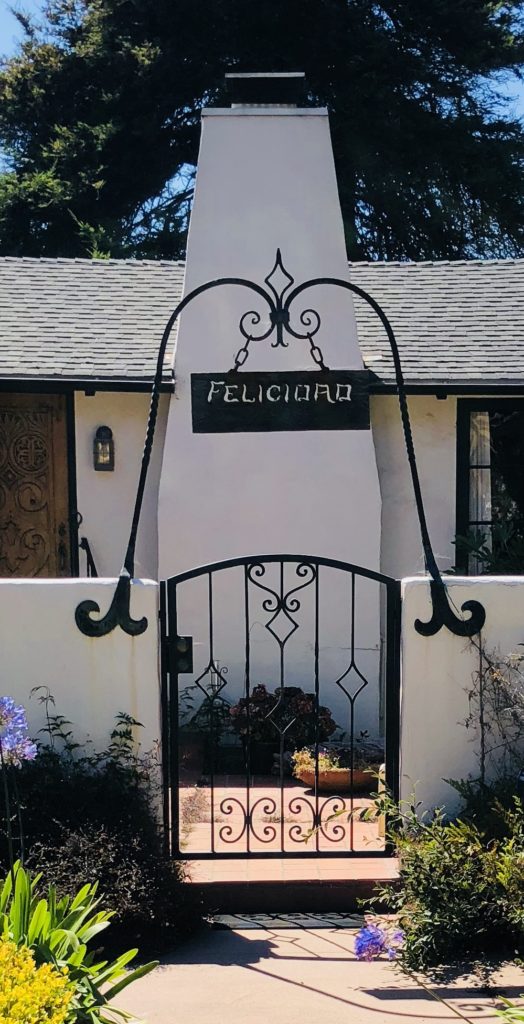
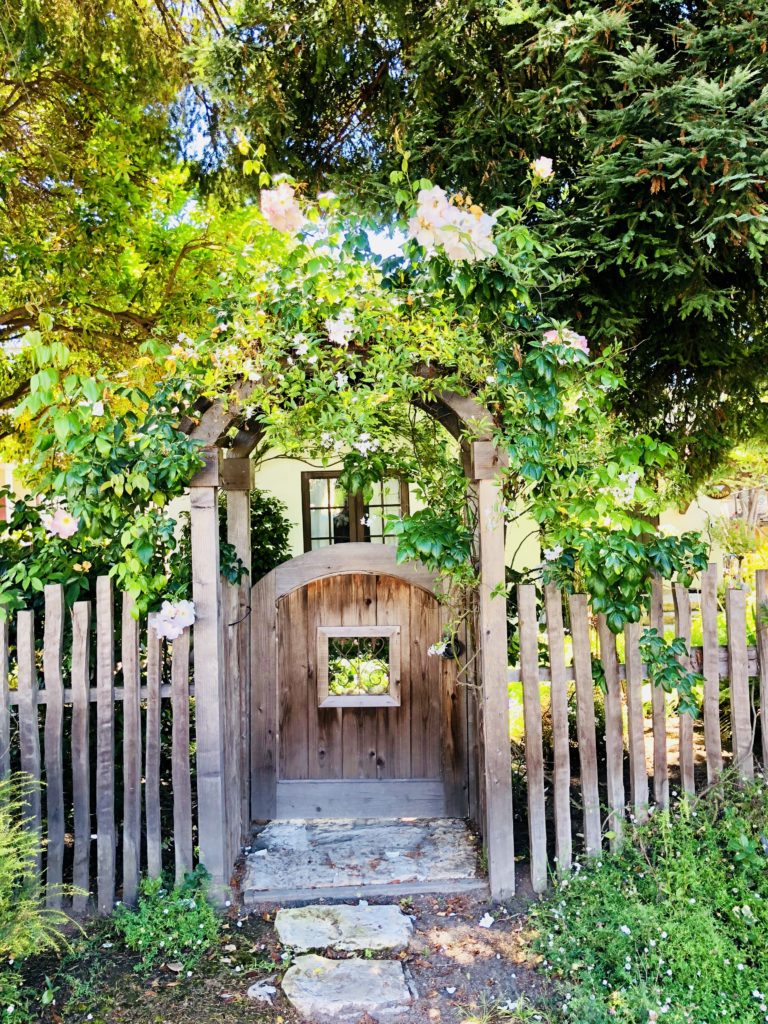
Your promises, your pleasures, your penchants, are all portrayed in your garden. A garden gate that expresses your sentiments and passions provides a warm and inviting welcome to your garden. I hope that you enjoyed and were inspired by these lovely garden gates from Carmel-by-the-Sea.
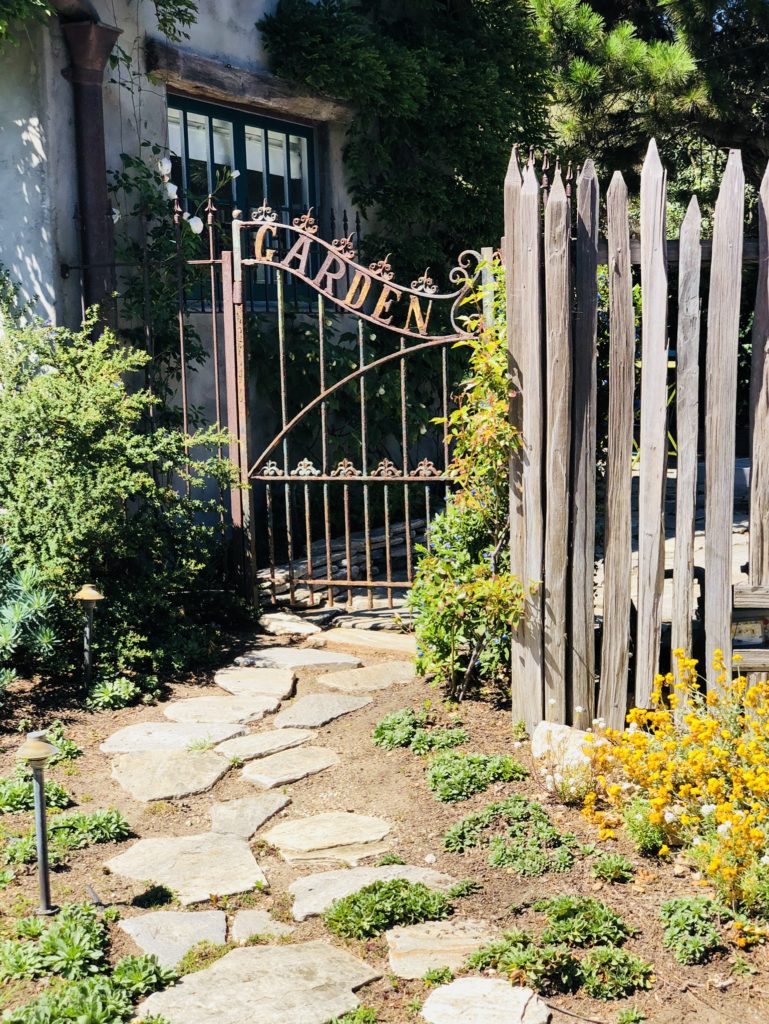
Thank you for visiting my blog! Wishing you peace, love, happiness, and beautiful vistas!
-
Fairy Tale Cottages in Carmel-by-the-Sea
Eclectic, charming, and private, Carmel-by-the-Sea was founded in 1902. It began as a haven for creative intellectuals. Designed by James Devendorf and Frank Powers of San Francisco, the village attracted famous artists, poets, musicians, and writers, including Robinson Jeffers, Sinclair Lewis, Upton Sinclair, Jack London, and Robert Louis Stevenson. Stevenson used Carmel as inspiration for his famous novel, “Treasure Island”.
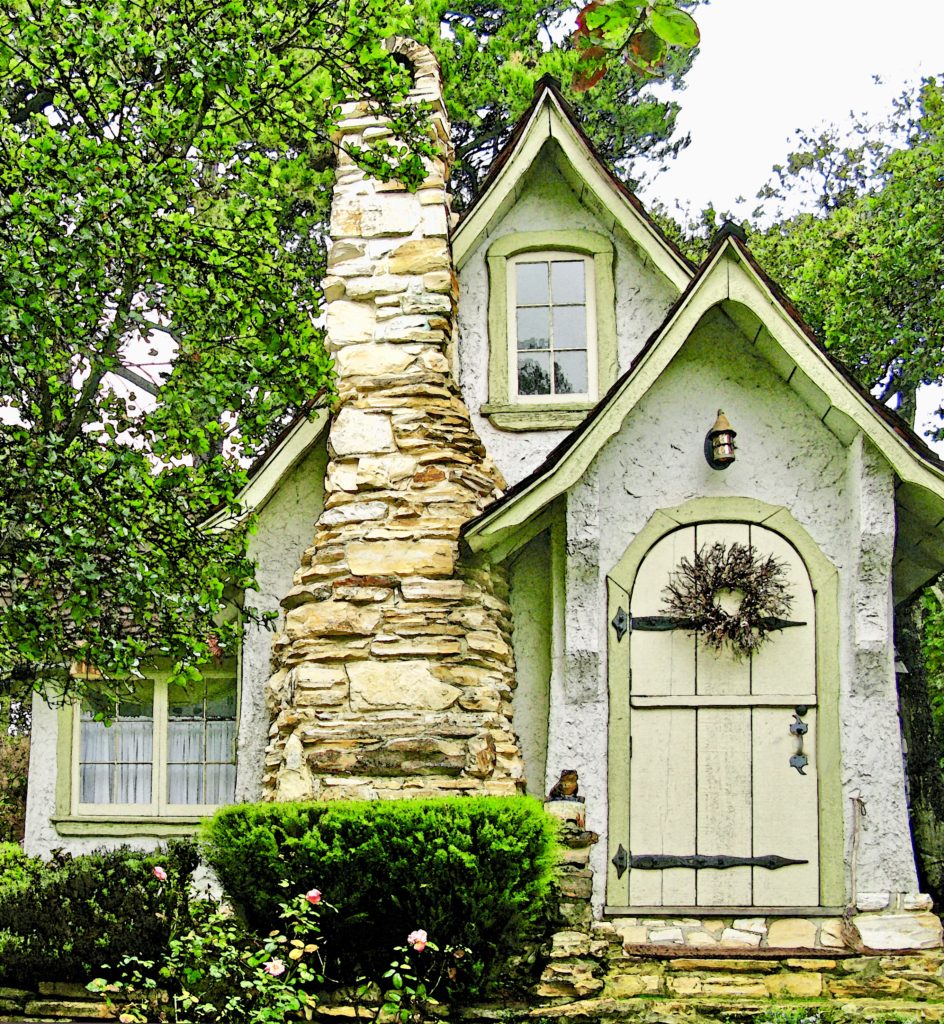 The fairy tale homes prevalent in Carmel originated with builder Hugh Comstock. Comstock built the first cottage as a studio for his wife, Mayotta, whose “Otsy-Totsy” doll business was booming. Although he had no training as a builder, he had the vision and ingenuity to create these whimsical buildings. Twenty-one of his cottages remain in the area today. Comstock is said to have been inspired by the illustrations of Arthur Rackham’s turn-of-the-century children’s books. His signature style included roofs with steep pitches, arched windows and doors, and rustic Carmel stone chimneys. As you wend and weave through the courtyards and quiet side streets of Carmel-by-the-Sea you will see many of these historical homes.
The fairy tale homes prevalent in Carmel originated with builder Hugh Comstock. Comstock built the first cottage as a studio for his wife, Mayotta, whose “Otsy-Totsy” doll business was booming. Although he had no training as a builder, he had the vision and ingenuity to create these whimsical buildings. Twenty-one of his cottages remain in the area today. Comstock is said to have been inspired by the illustrations of Arthur Rackham’s turn-of-the-century children’s books. His signature style included roofs with steep pitches, arched windows and doors, and rustic Carmel stone chimneys. As you wend and weave through the courtyards and quiet side streets of Carmel-by-the-Sea you will see many of these historical homes.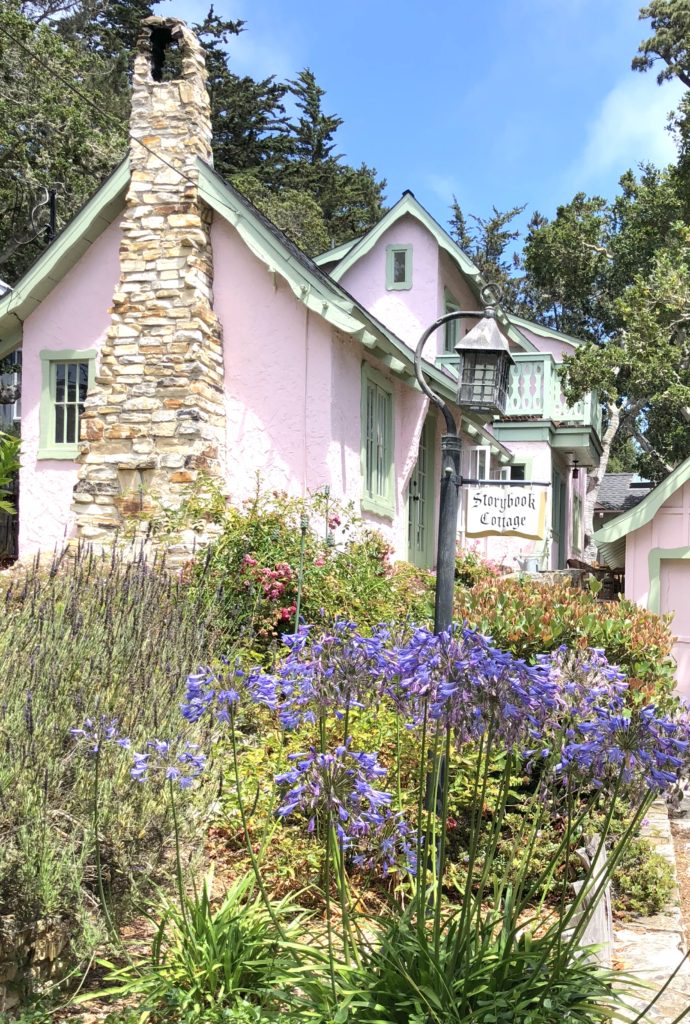
This Comstock home was built in 1927 as his studio, and later, as a home for his wife.
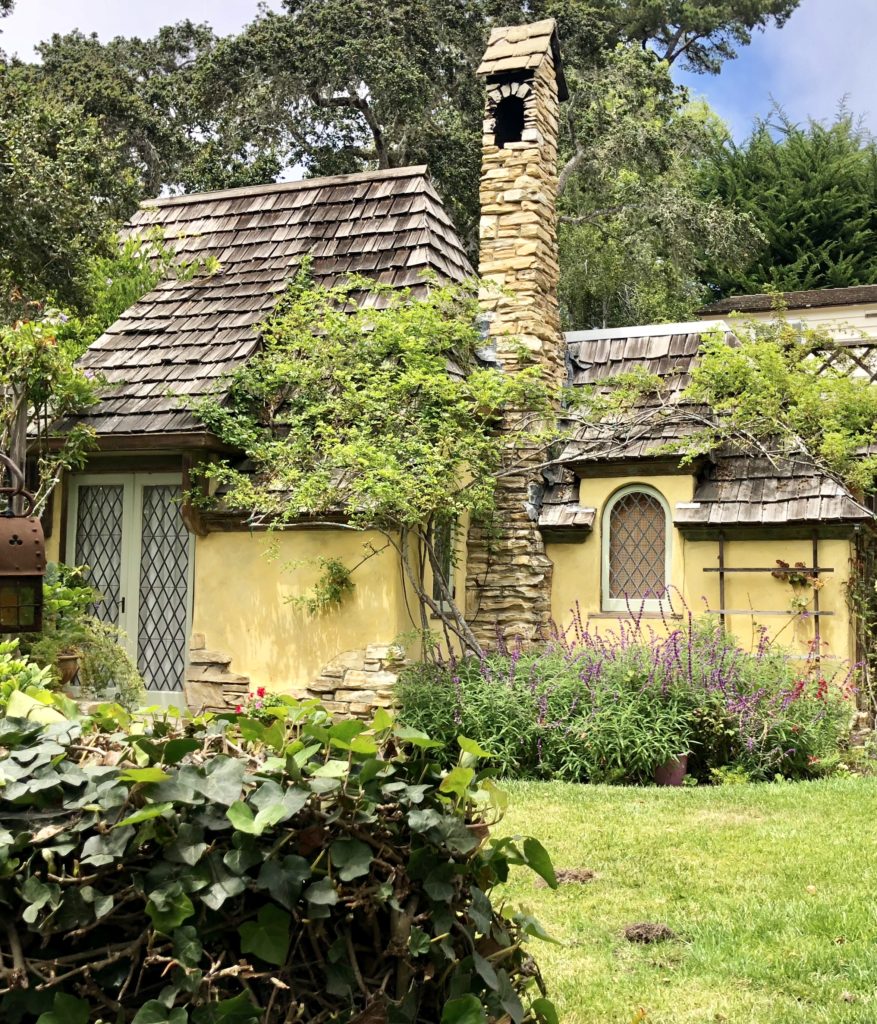
The “Marchen-Haus”, built in 1928, was Comstock’s largest cottage.
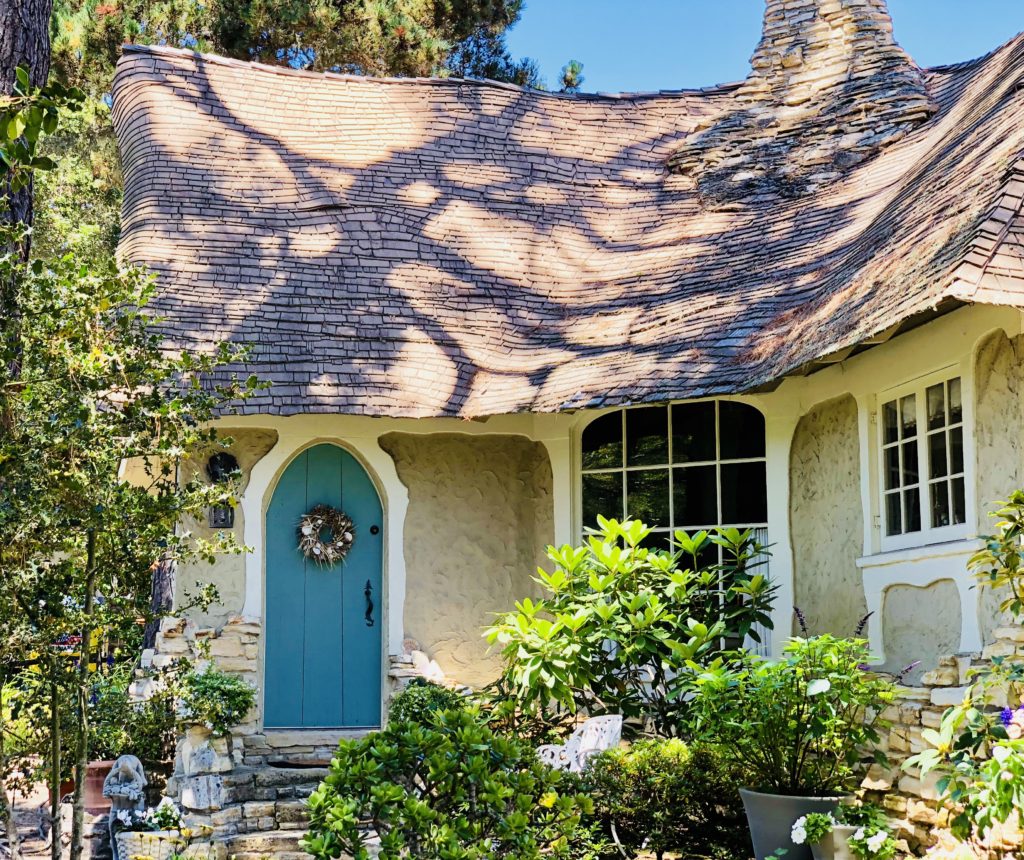
The Tuck Box was the only property Comstock built for commercial use. It is now used as a tea room; see The Tuck Box: A Fairy Tale Tea Room in Carmel-by-the-Sea

Comstock’s cottages became the local rage, and other builders soon followed suit. The Cottage of Sweets was built in 1922 and served as a weaving shop, ticket booth for theatres, a dress shop, and finally, a candy store. The pink cottage next to it was based on illustrations from a Swedish folktale book and included miniature turrets and stucco tiles above the windows.

This Tudor style cottage was built in 1925, and stands just east of the Candy Cottage.
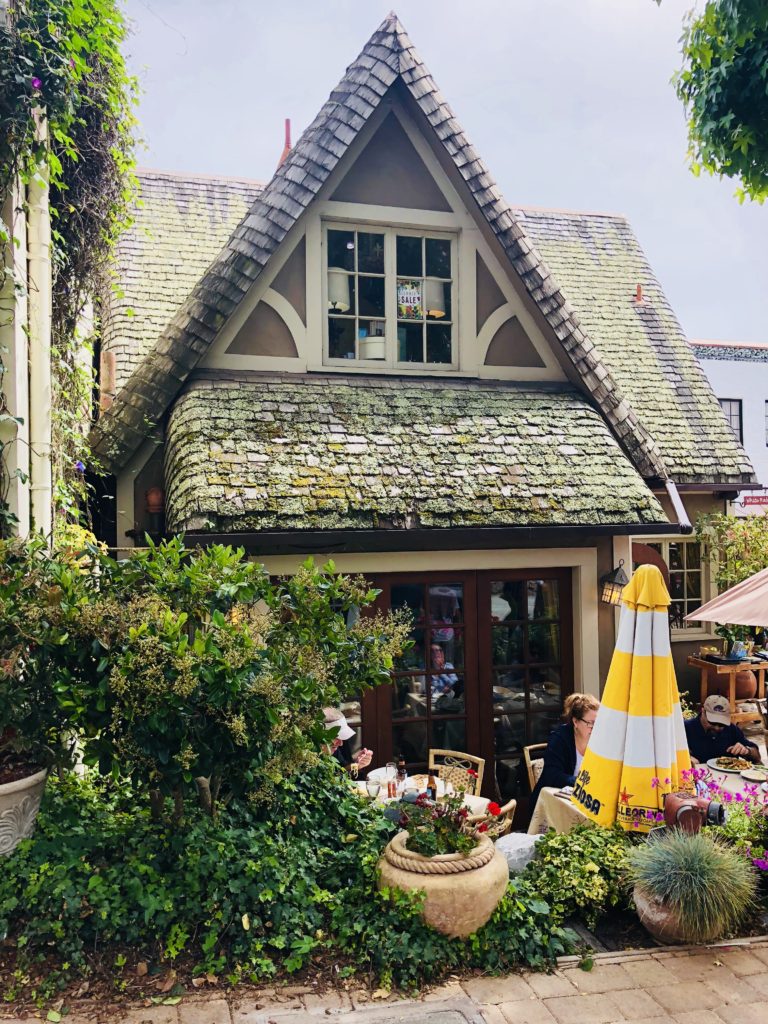
The French Country style Normandy Inn was built by architect Robert Stanton in 1924, and features a shake roof and half-timbering.
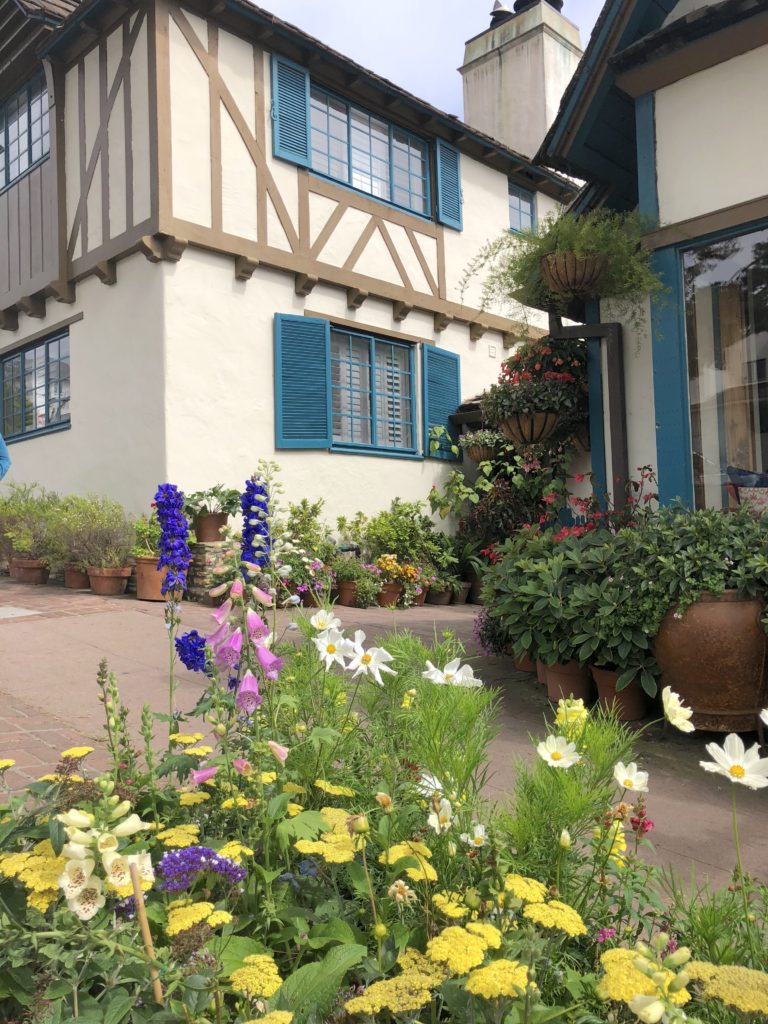
The original bohemian owners of many of these fairy tale homes may be gone, but their spirit of creativity, individualism, and beauty remains.
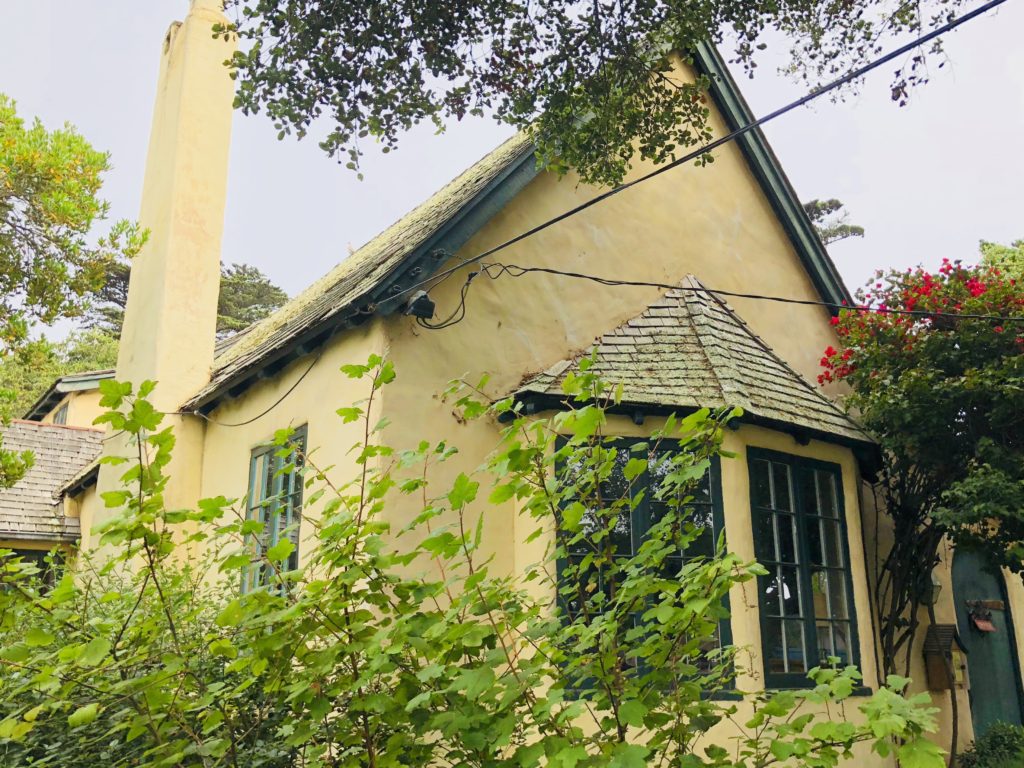
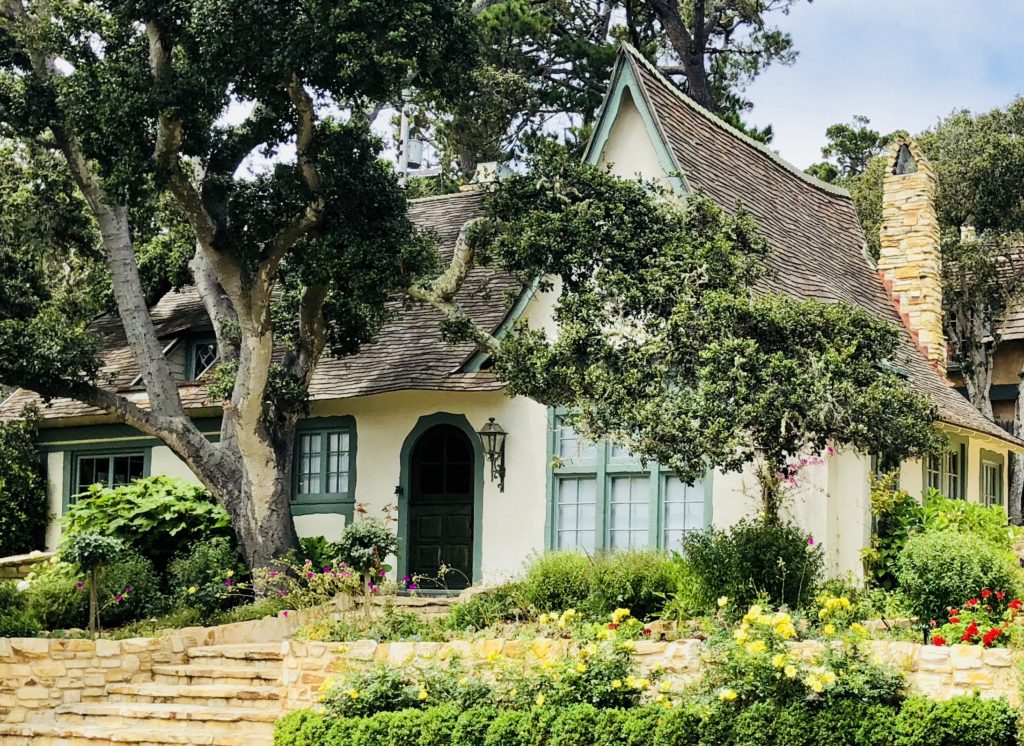
Carmel-by-the-Sea began as a refuge for dreamers, artists, and story-tellers. Houses here do not have numbers, but rather, names, in order to support a sense of community and personal identity.
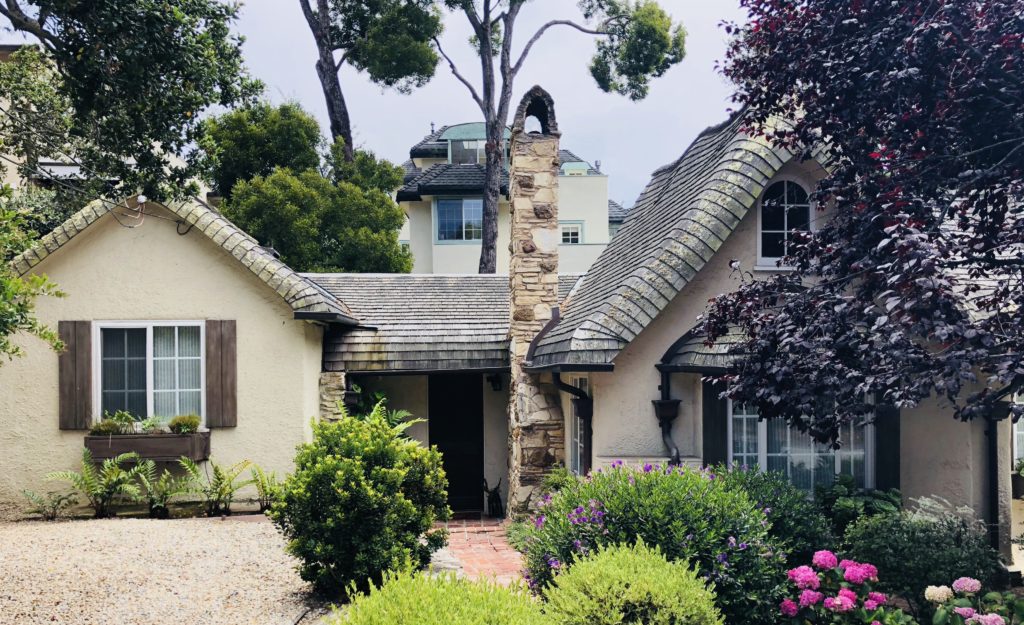
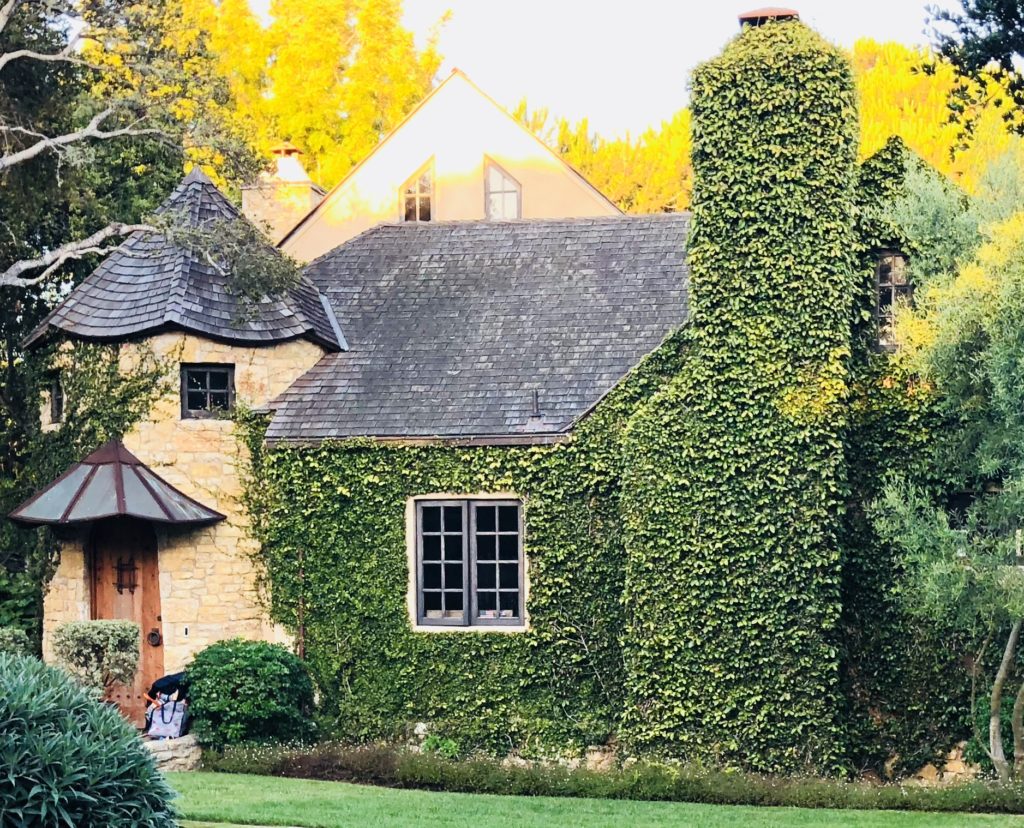
Crafted from local materials, and with lovely imperfections, the homes here look like something from Grimm’s Fairy Tales. You almost expect Snow White & The Seven Dwarves to appear in the cottage below, or Rapunzel to let down her hair from the stone tower in the cottage above.
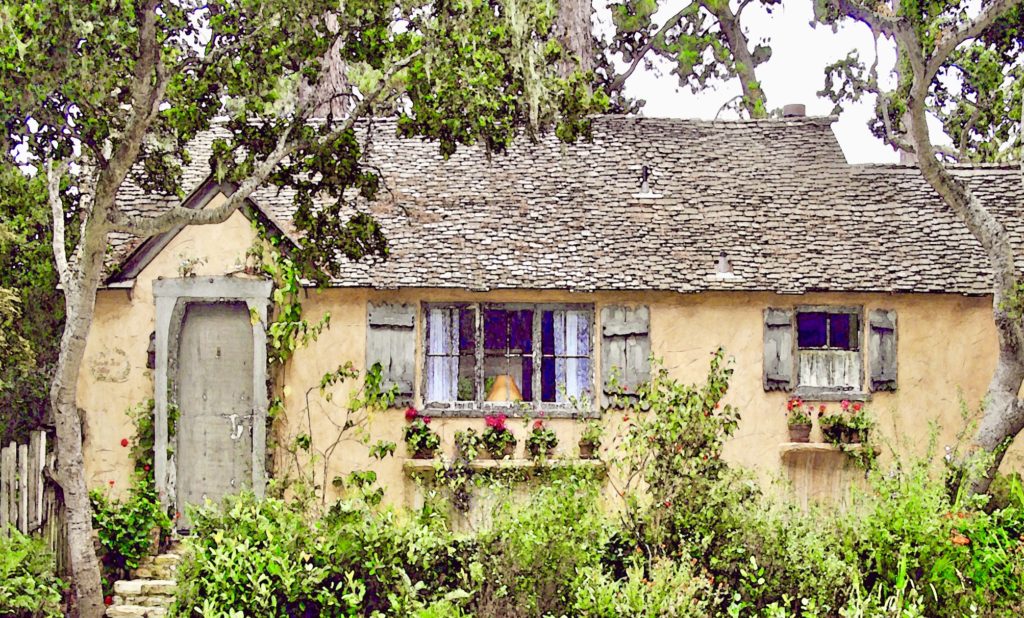
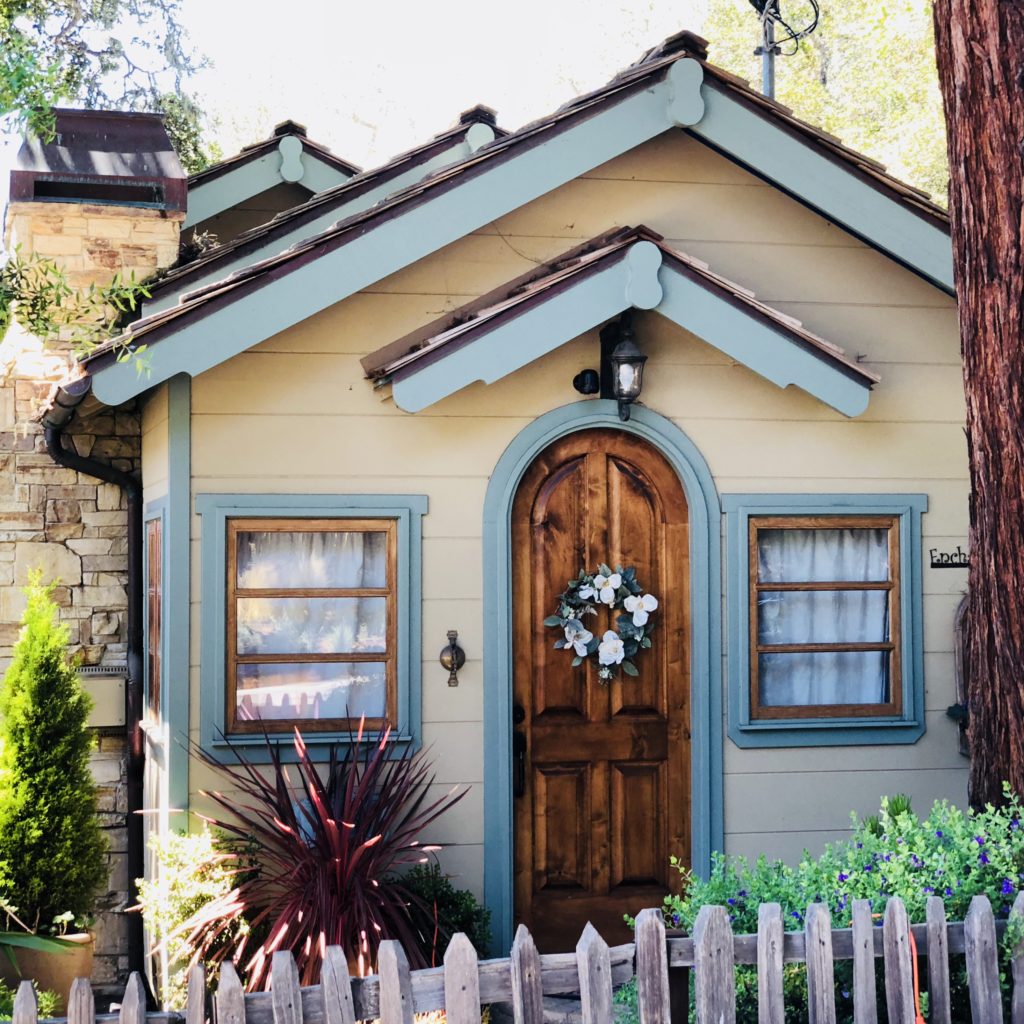
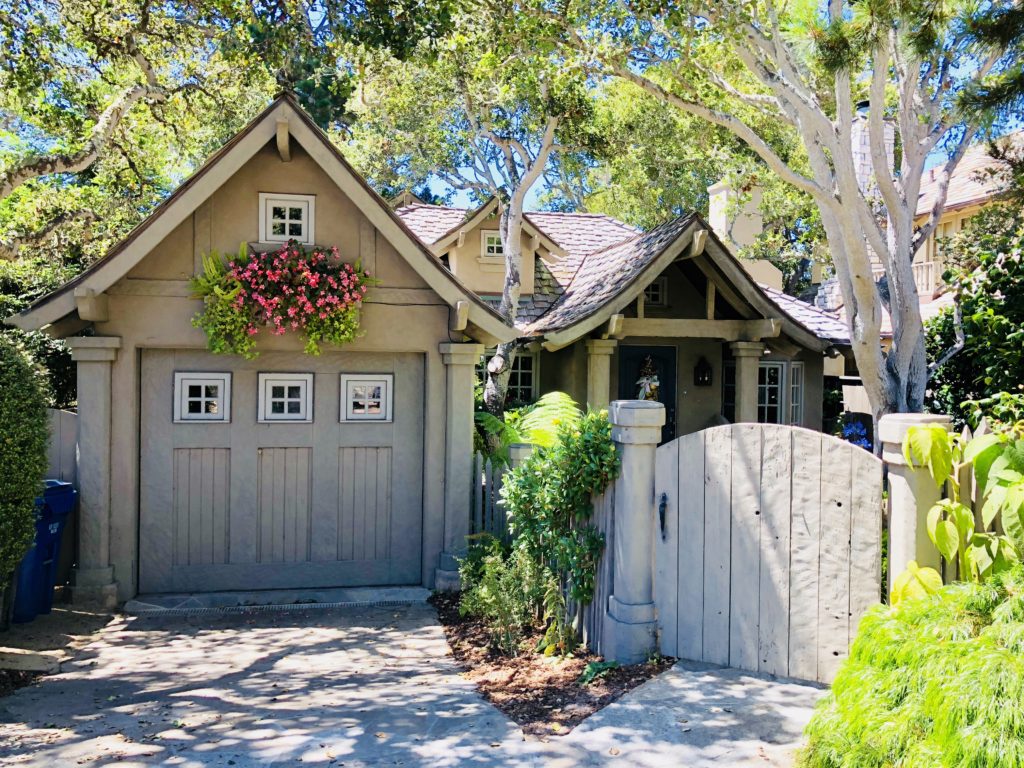
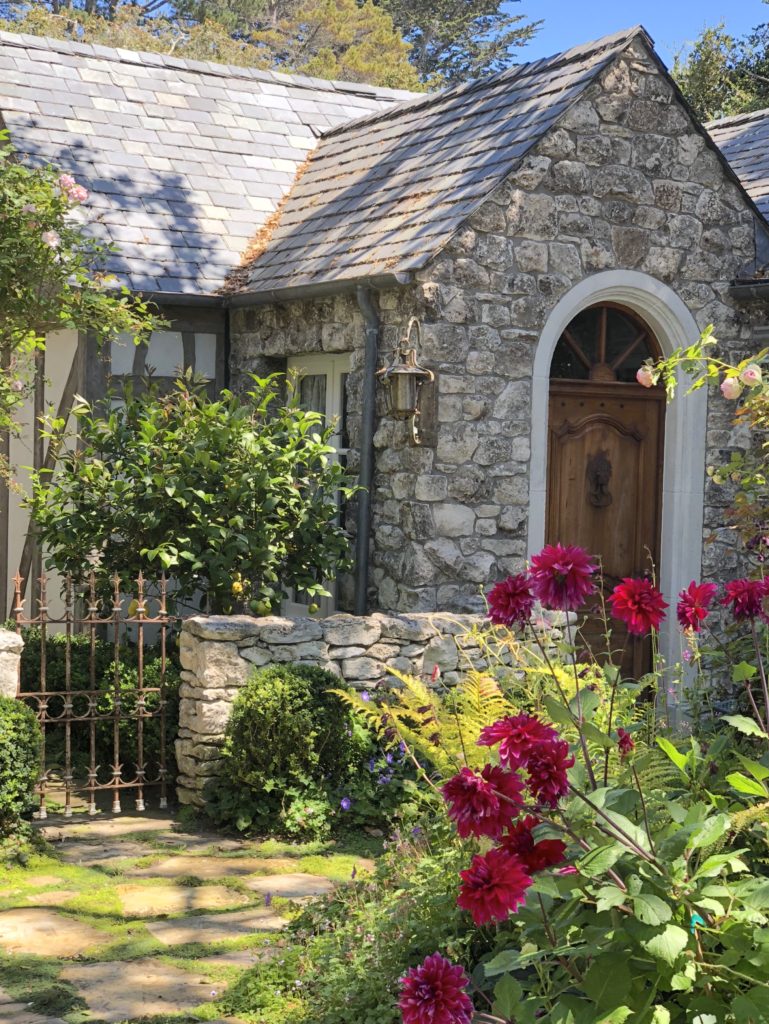
If you visit Carmel-by-the-Sea, I highly recommend that, in addition to visiting the beach and local shops, you take time to slowly meander along the byroads and quiet side streets. You never know where your explorations will lead and what you will find, but most certainly, your fairytale adventures in Carmel-by-the-Sea will have a happy ending.
Thank you for visiting my blog! Wishing you peace, love, happiness, and beautiful vistas!
-
Magical & Enchanting Gardens of Carmel-by-the-Sea
“A garden should make you feel you’ve entered privileged space — a place not just set apart but reverberant — and it seems to me that, to achieve this, the gardener must put some kind of twist on the existing landscape, turn its prose into something nearer poetry.”__Michael Pollan, Second Nature: A Gardener’s Education
 As a little girl, I grew up watching my mother & father tend to our garden. It was an important part of our lives. Each year, my father would diligently work in the garden, turning over the soil. He would sow green onions, radishes, green beans, tomatoes, and cucumbers. I would help my mother plant zinnias, morning glories, sweet william, and black-eyed Susans. I would help cut bouquets of fat pink peonies and pale violet lilacs and pull weeds straggling between the flowers. I loved watching things grow and thrive with only minimal care, water, and sunshine. I played with snapdragons, made daisy chains, and helped gather fresh vegetables. I appreciated the beauty and bounty provided by nature.
As a little girl, I grew up watching my mother & father tend to our garden. It was an important part of our lives. Each year, my father would diligently work in the garden, turning over the soil. He would sow green onions, radishes, green beans, tomatoes, and cucumbers. I would help my mother plant zinnias, morning glories, sweet william, and black-eyed Susans. I would help cut bouquets of fat pink peonies and pale violet lilacs and pull weeds straggling between the flowers. I loved watching things grow and thrive with only minimal care, water, and sunshine. I played with snapdragons, made daisy chains, and helped gather fresh vegetables. I appreciated the beauty and bounty provided by nature.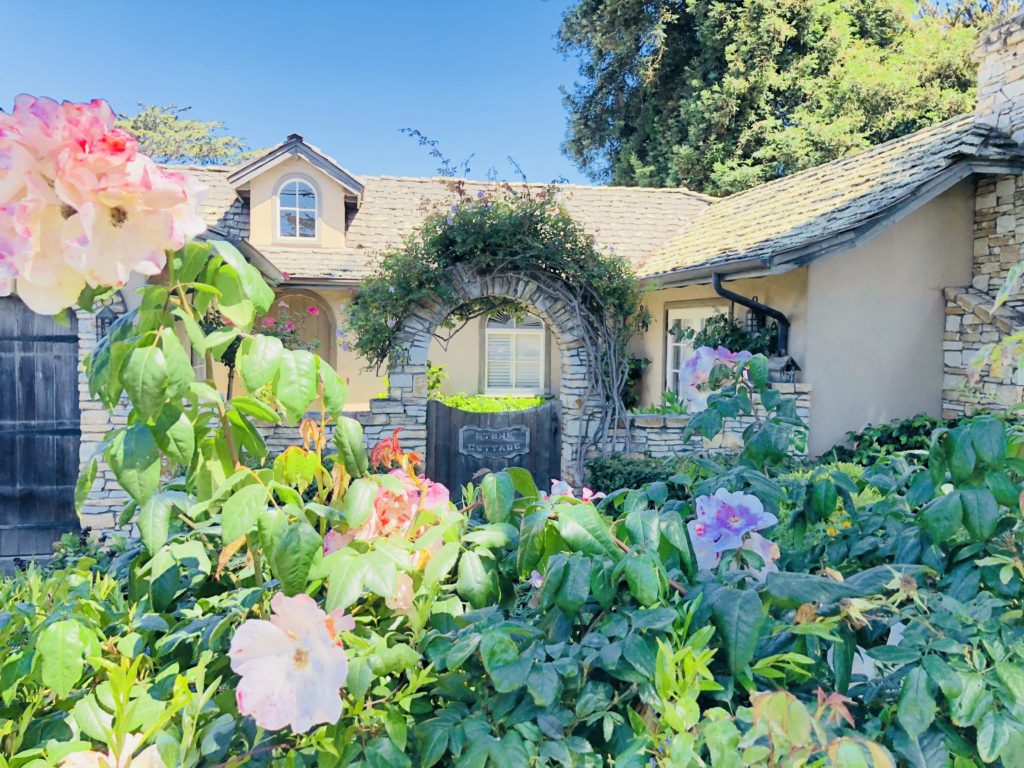 It is no surprise that as an adult, nothing is more peaceful and relaxing to me, than working in my garden. I also love to see other gardens. I believe that gardening nurtures the heart and soul.
It is no surprise that as an adult, nothing is more peaceful and relaxing to me, than working in my garden. I also love to see other gardens. I believe that gardening nurtures the heart and soul.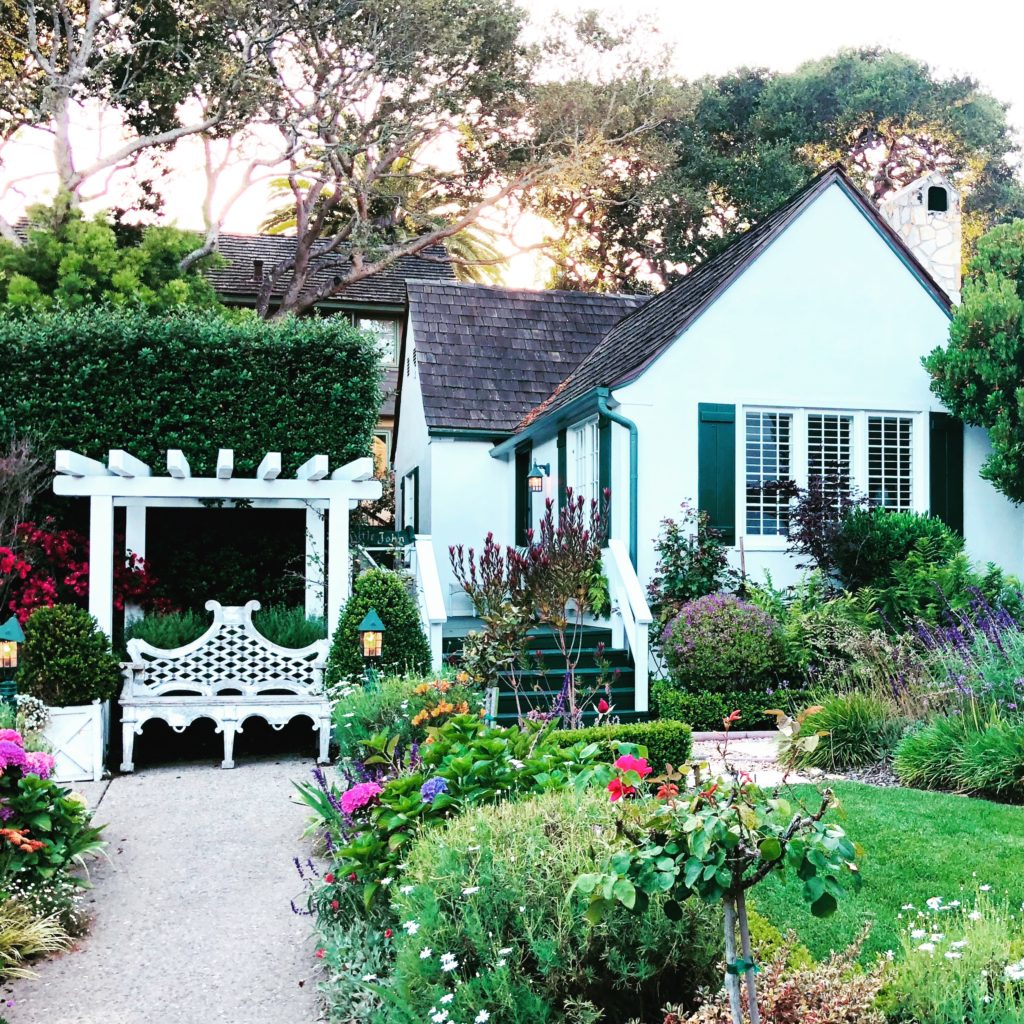 One of my favorite places to view beautiful gardens is Carmel-by-the-Sea. There, quaint seaside cottages abound, with darling garden gates and arbors, climbing roses, and picket fences. I love to wander along the streets with names like Court of the Golden Bough, Casanova, and Inspiration Avenue, and take in all the lovely views.
One of my favorite places to view beautiful gardens is Carmel-by-the-Sea. There, quaint seaside cottages abound, with darling garden gates and arbors, climbing roses, and picket fences. I love to wander along the streets with names like Court of the Golden Bough, Casanova, and Inspiration Avenue, and take in all the lovely views.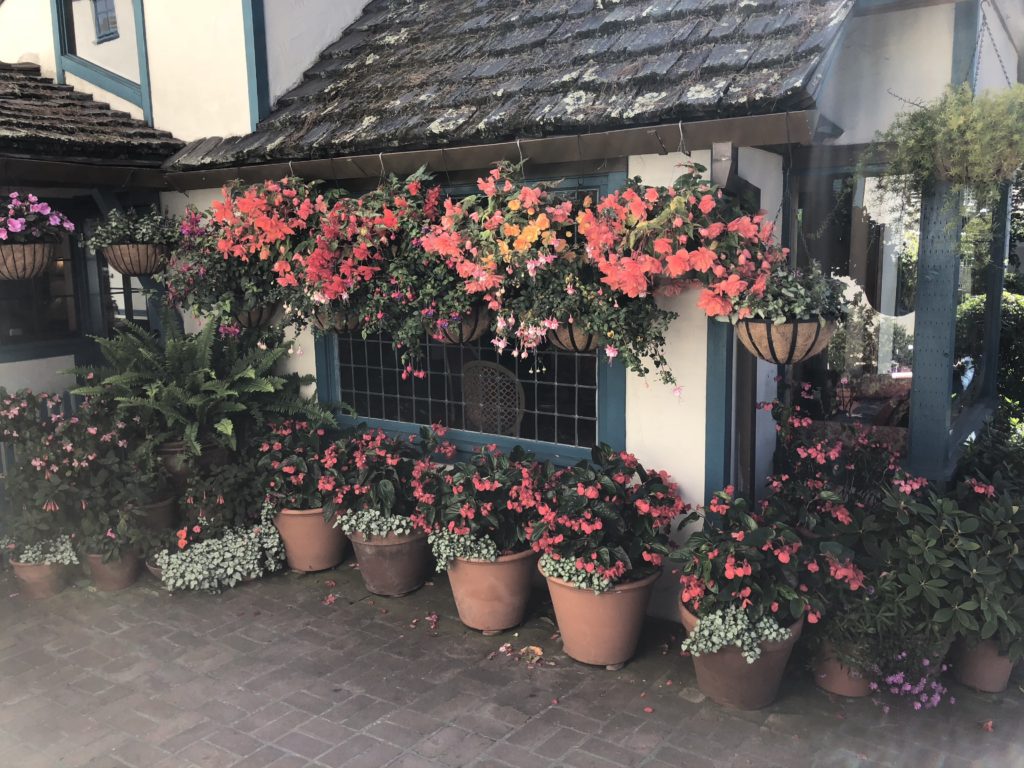 It is always reassuring to see well-tended flowers and gardens. To know that others love flowers and care for their gardens is very comforting.
It is always reassuring to see well-tended flowers and gardens. To know that others love flowers and care for their gardens is very comforting.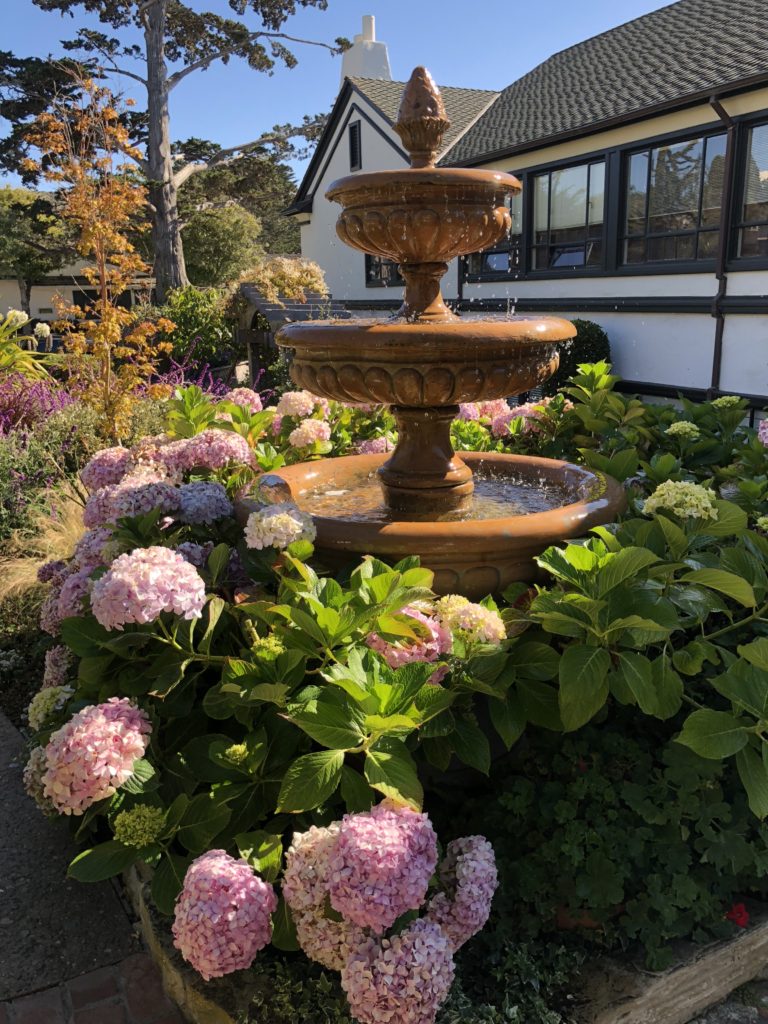 “A garden is a grand teacher. It teaches patience and careful watchfulness; it teaches industry and thrift: above all it teaches entire trust.” __Gertude Jekyll
“A garden is a grand teacher. It teaches patience and careful watchfulness; it teaches industry and thrift: above all it teaches entire trust.” __Gertude Jekyll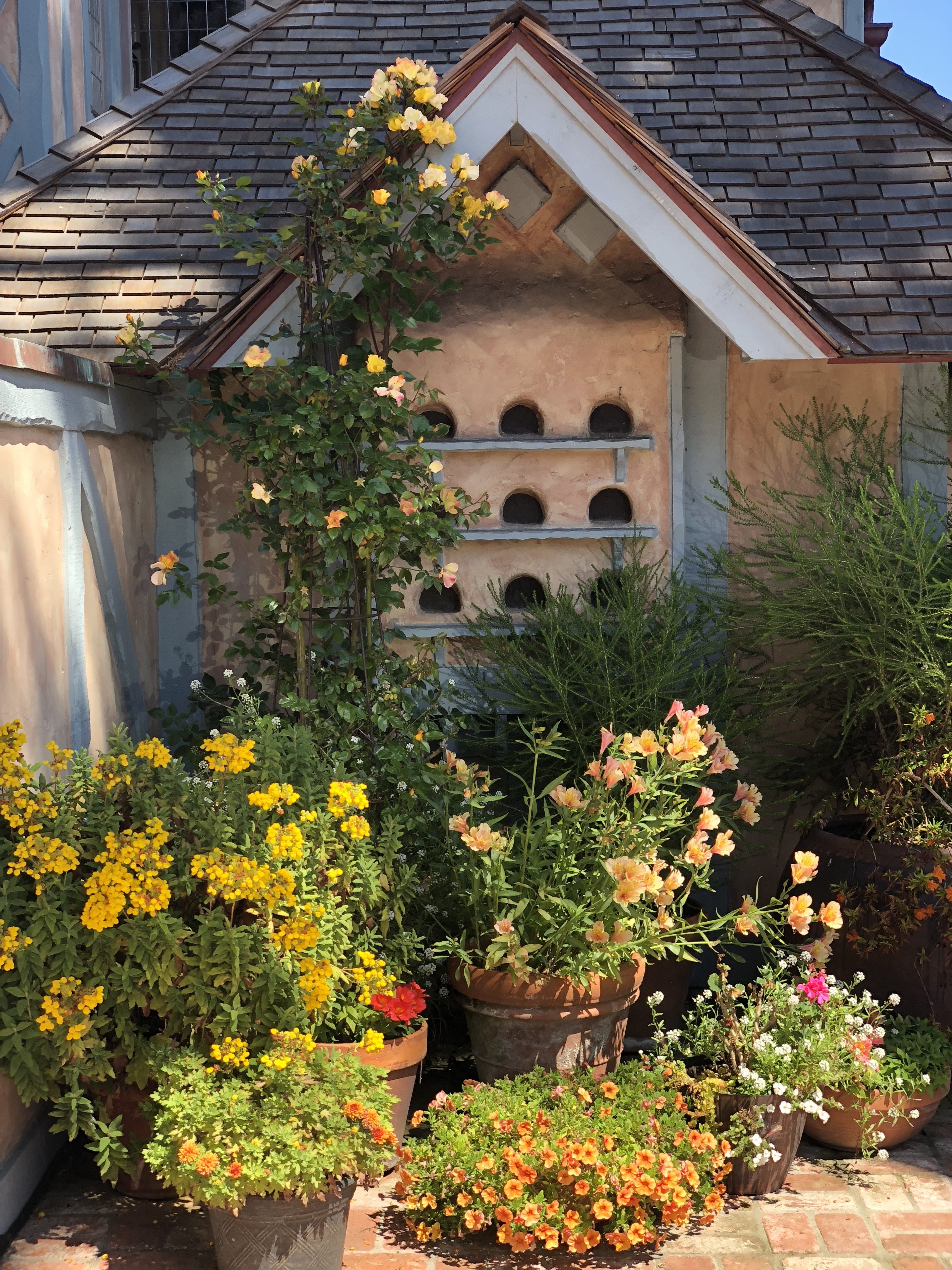 I love that even in the tiniest of spaces, people will grow flowers in pots where there is no room for a garden. I applaud everyone who finds a way to nurture and grow things, no matter where he or she lives.
I love that even in the tiniest of spaces, people will grow flowers in pots where there is no room for a garden. I applaud everyone who finds a way to nurture and grow things, no matter where he or she lives.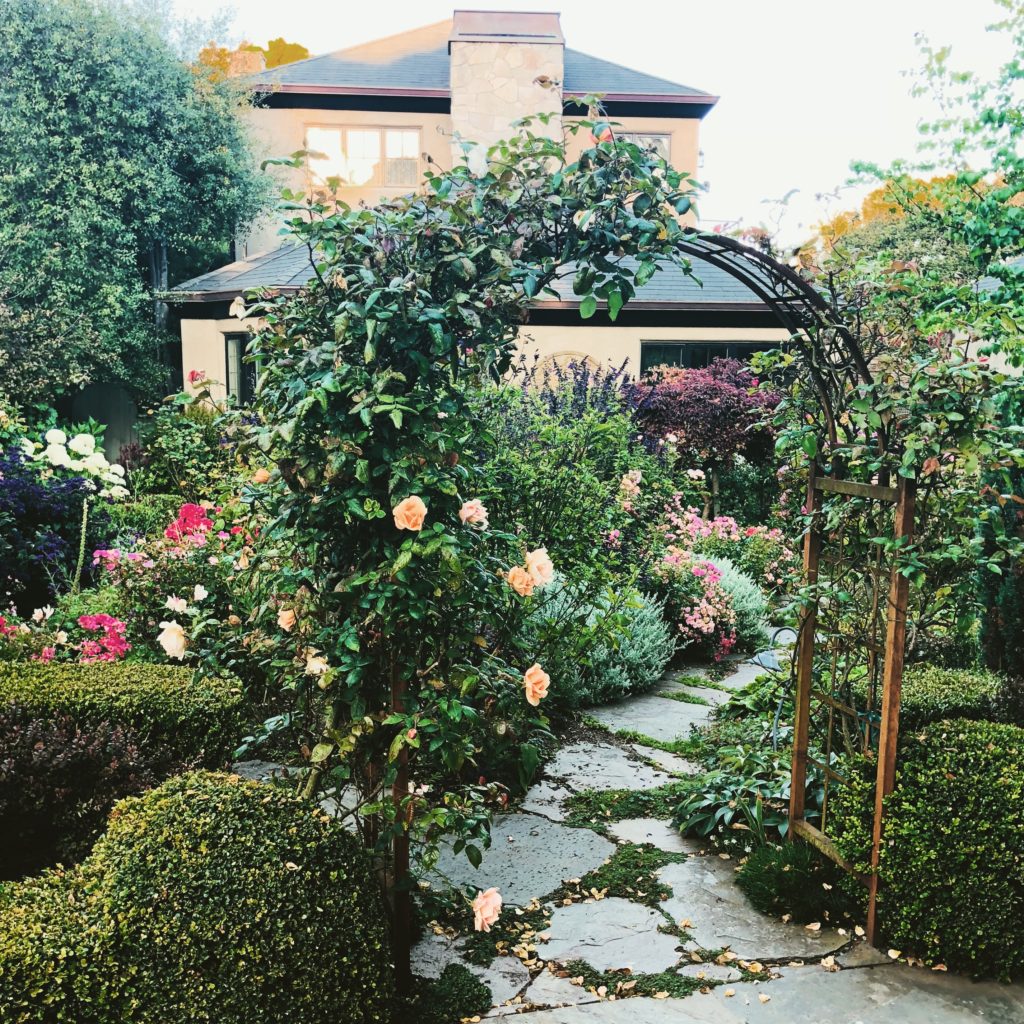 “There are always flowers for those who want to see them.”__Henri Matisse
“There are always flowers for those who want to see them.”__Henri Matisse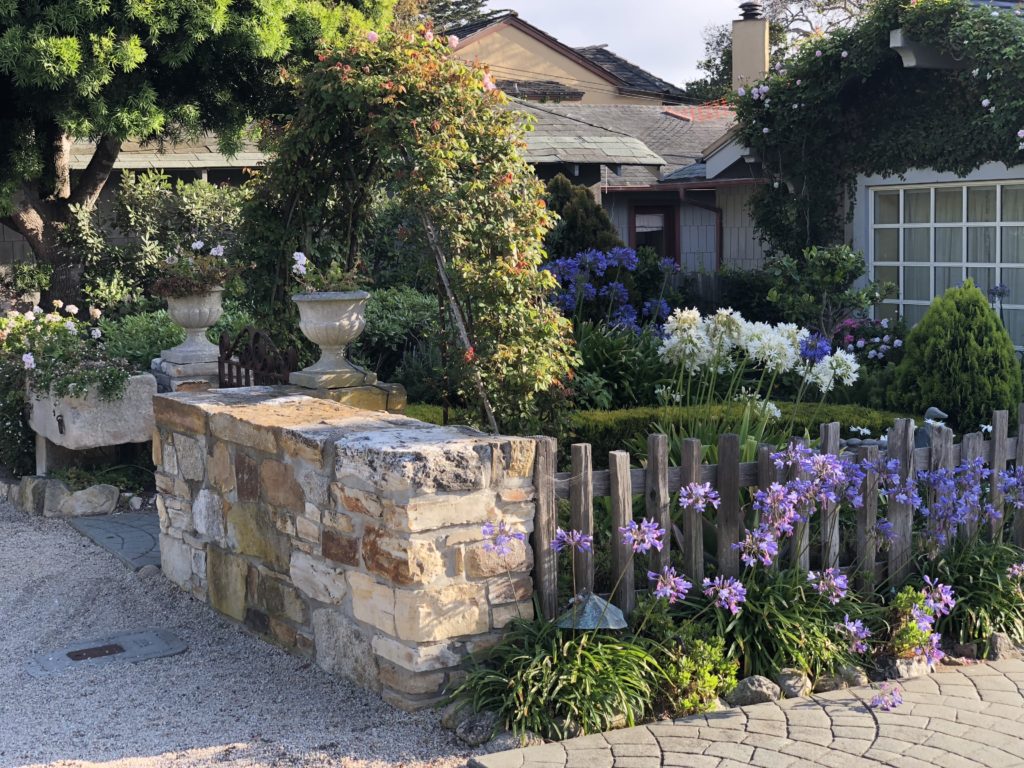 Serendipity is often the best way to discover beautiful gardens. I hope that you enjoyed this post and that it inspired you to find or create your own magical and enchanting gardens!Thank you for visiting my blog! Wishing you peace, love, happiness, & beautiful vistas!
Serendipity is often the best way to discover beautiful gardens. I hope that you enjoyed this post and that it inspired you to find or create your own magical and enchanting gardens!Thank you for visiting my blog! Wishing you peace, love, happiness, & beautiful vistas! -
Nine Best Fresh Herbs To Use In Your Kitchen
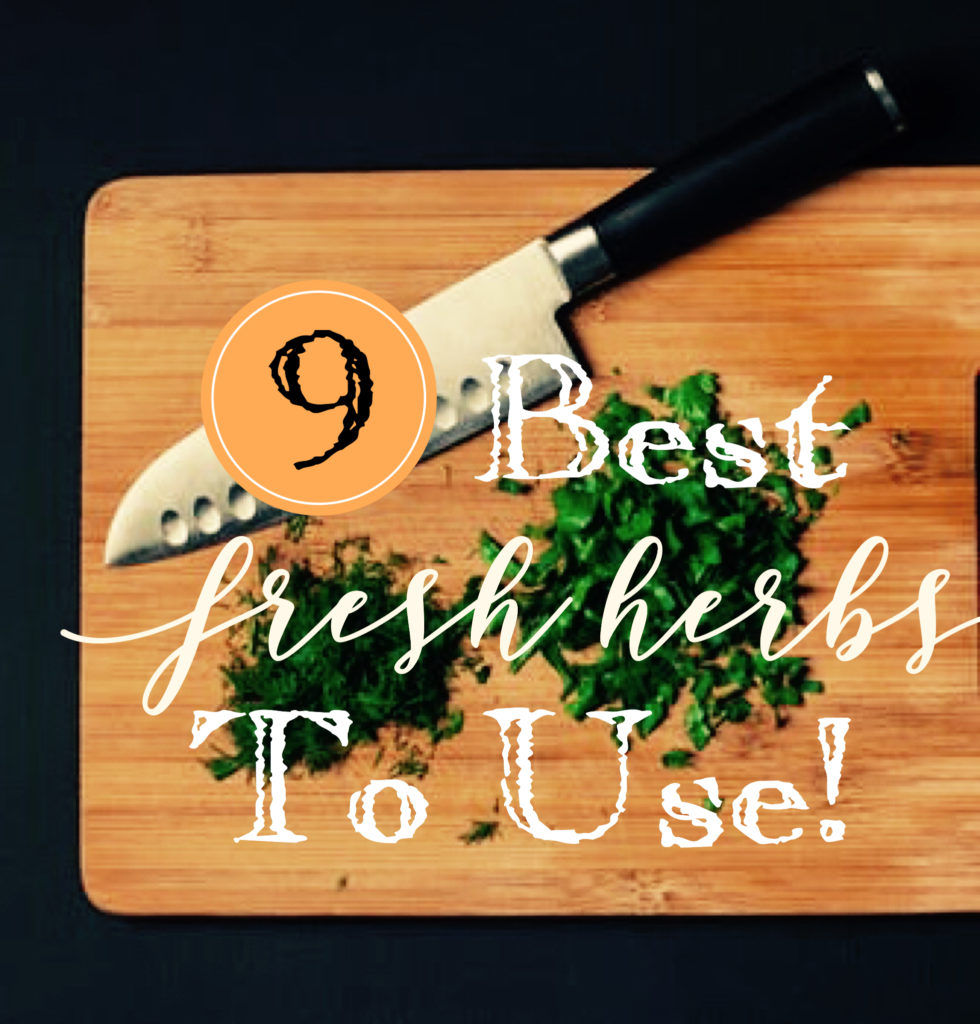
If like me, you have had sticker shock at the price of fresh organic herbs lately, you will be happy to know that they are super easy to grow yourself for much less! One of the things I like most about herbs is that you can grow them pretty much anywhere. Even if you have no space for a garden, you can grow many herbs in pots on your windowsill or in containers on a patio. Fresh, organic, high-quality herbs can make the difference between a bland dish and something filled with exceptional flavor and aroma. Herbs often have powerful health benefits as well, by providing vitamins and minerals, strengthening the immune system, lowering blood sugar and cholesterol, and reducing inflammation.
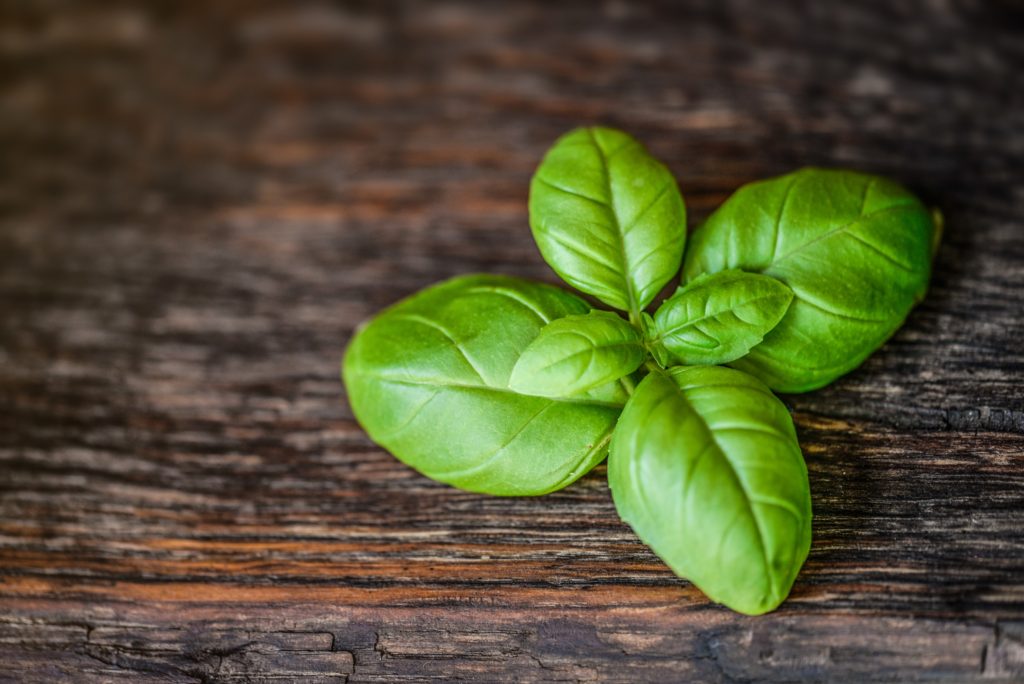
- Basil is by far my favorite herb. It is a staple in pizzas, salads, sauces, and pesto. In addition, it contains antioxidants and helps moderate blood sugar. It is easy to grow but needs hot weather and must be kept watered regularly to thrive.
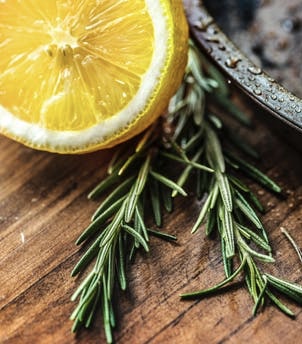
2. Rosemary. I love the smell of rosemary! It is a great herb to add to poultry and vegetable dishes. It has a refreshing scent and is super easy to grow, preferring dry conditions. It is said to improve mood, memory and protect the immune system. Here in California, a rosemary plant will grow into a full-sized bush and thrives with neglect. Seriously!

3. Dill is easy to grow. It will also attract helpful insects to your garden such as wasps and other predatory insects. It also is a delicious complement to fish and sour cream dip for vegetables. Dill is a source of calcium (surprise!), iron and magnesium.

4. Thyme is a dainty, low-growing herb with a lemony scent. I love to use it for soups, stews, vegetables, and poultry. It is a staple of Provençal French cuisines. Thymol, an ingredient found in thyme, has been shown to prevent fungal and viral infections, reduce respiratory issues, and alleviate stress.
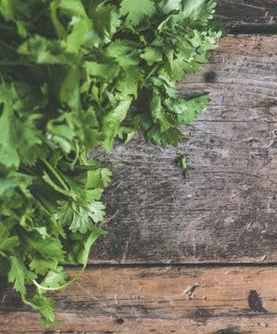
5. Cilantro is another of my favorite herbs and tastes amazing in salads, with chicken, and in Mexican cuisine. The seeds of cilantro are known as coriander. It grows best in cooler weather and requires moderate watering.
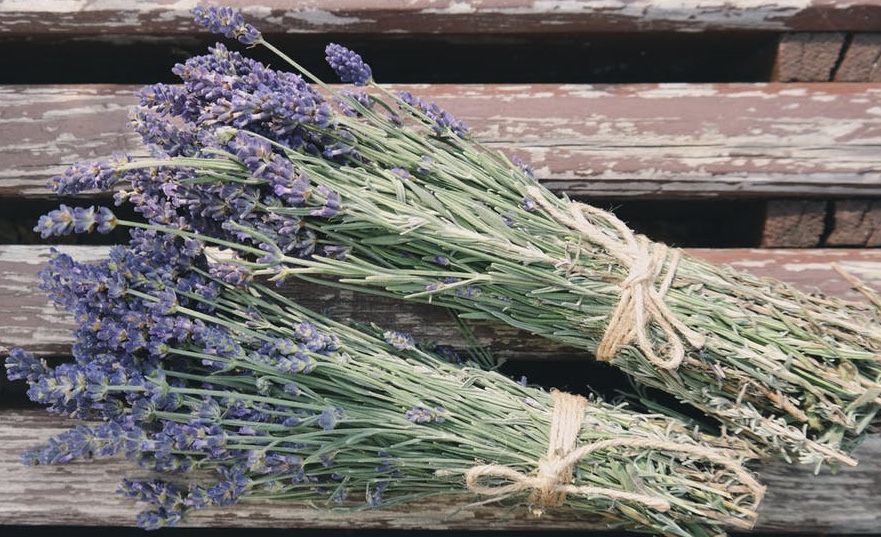
6. Lavender smells fantastic and survives with little care here in California, as long as it has full sun and well-drained soil. Health benefits include the soothing of insect bites and headaches and it has been touted as a sleep aid. I like to keep dried lavender sachets in drawers to keep linens freshly scented. In cooking, lavender imparts a sweet flavor.
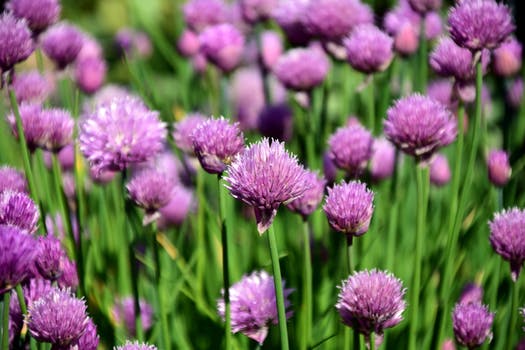
7. Chives are super easy to grow and look amazing in herb gardens. Chives are a member of the garlic family and are considered one of the “fine herbs” of French cuisine. Chives are an excellent source of beta-carotene and Vitamin C and taste great with potatoes and other vegetables as well as fish as well as in soups and salads.
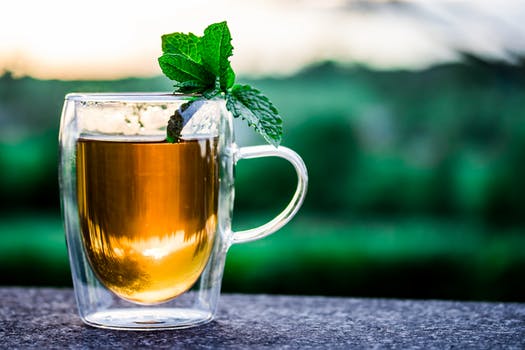
8. Mint is super duper easy to grow. There are several varieties of mint. You can use it in drinks like mojitos, mint juleps, and iced tea. It is also used in soups and salads. It is best used fresh. Mint has high antioxidant levels, freshens the breath and will help to calm your stomach. It also relieves congestion and has anti-inflammatory properties. If you grow mint, remember that it’s invasive. Mint will spread!

9. Oregano is also part of the mint family and is native to the warm climates of Eurasia and the Mediterranean. Oregano is a plant, but in colder climates can be grown as an annual. It is sometimes called wild marjoram and is closely related to sweet marjoram. Oregano is used for flavoring and is a staple herb of Italian American cuisine including everyone’s favorite, pizza!
If you grow your own herbs, you can be assured that they are fresh and organic. If you grow your herbs indoors you can enjoy them fresh year-round. But if that’s not an option, consider freezing or drying some of your own herbs to have available for use year round. Be warned that herb gardening can be addicting!
Thank you for visiting my blog! Wishing you peace, love and happiness!
- Basil is by far my favorite herb. It is a staple in pizzas, salads, sauces, and pesto. In addition, it contains antioxidants and helps moderate blood sugar. It is easy to grow but needs hot weather and must be kept watered regularly to thrive.
-
How to Create Vintage Farmhouse Floral Displays
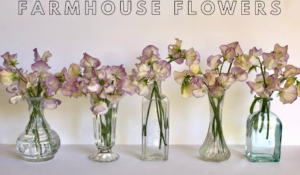
The best things in life are free: hugs, kisses, the beach, fresh clean air, a good night’s sleep, and flowers! If you are an avid gardener like me, you may often wonder how to display your cut flowers. Here are some great ideas! It is easy to create gorgeous farmhouse floral displays using these simple tips. Wondering what to do when you have dainty or fragile flowers, or just one or two flowers? I found a great solution. I went to my local thrift stores and found all these cute little vintage vases and jars. Each was no more than two or three dollars.
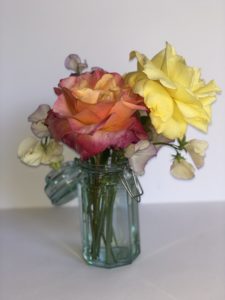
I have found that simplicity is often the best strategy in life and that also holds true in arranging flowers. I cut my “April in Paris” sweet peas and arranged in these vintage holders, along with a couple of pastel roses. Grouped together, these diminutive vases create an informal, lovely display, and their delicious sweet fragrance will fill your home! These look great together on a farmhouse table, an old trunk, or lined up on a fireplace mantle!
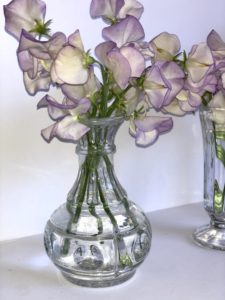
Another great idea for a cute farmhouse display. I used a vintage wooden fruit crate and filled it with Potatoe Vine, Sunflowers, and Rose of Sharon.
.
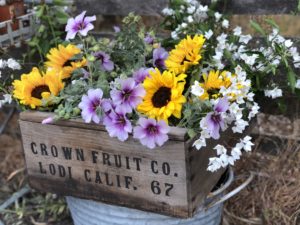
Keys to keeping cut flowers fresh: snip just the tips off the bottom of the stems after a few days. This will enable the flowers to “drink” as much water as possible. It is also a good idea to replace the water every few days. This will keep your flowers looking pretty even longer!